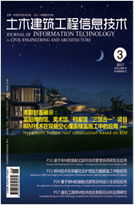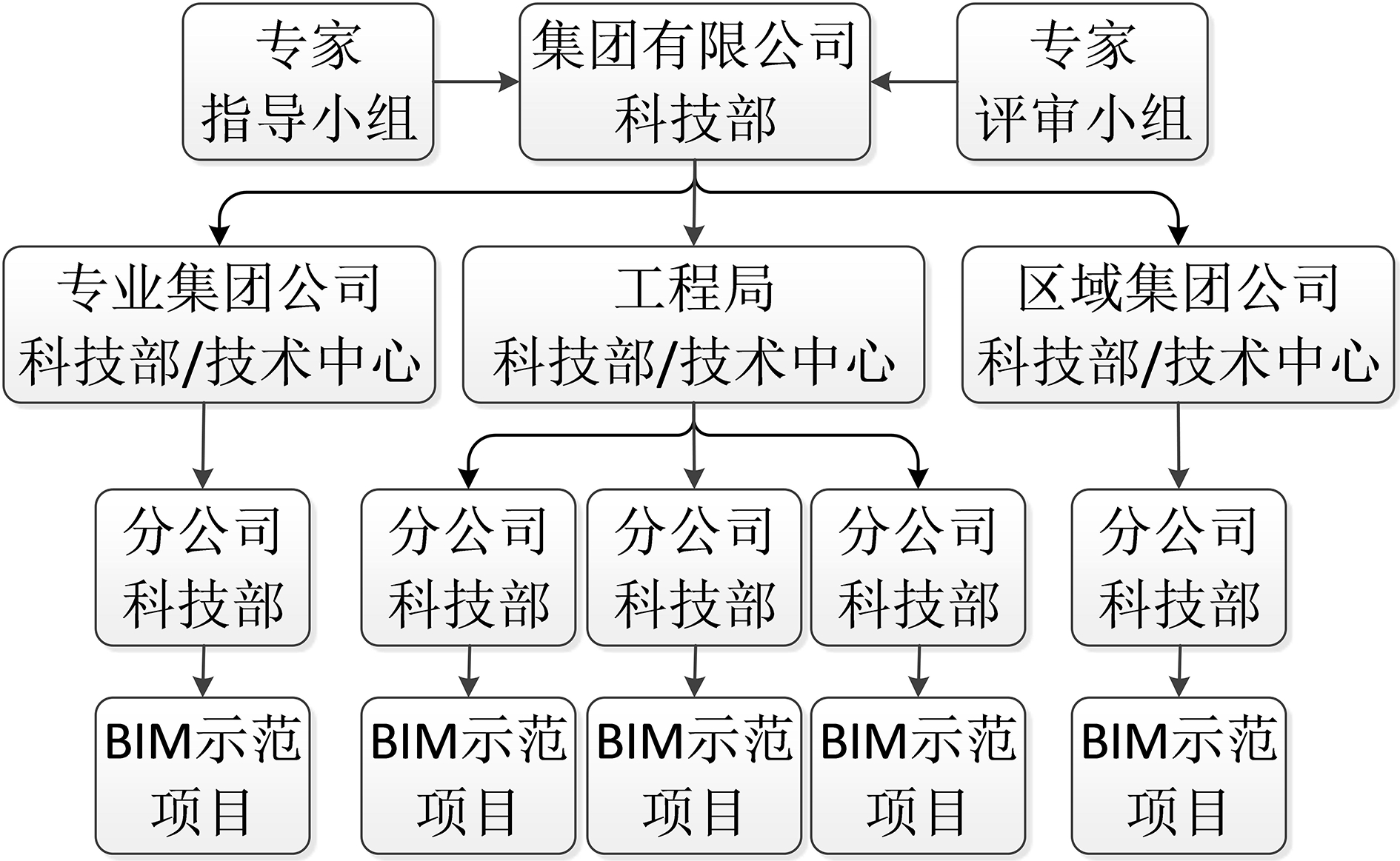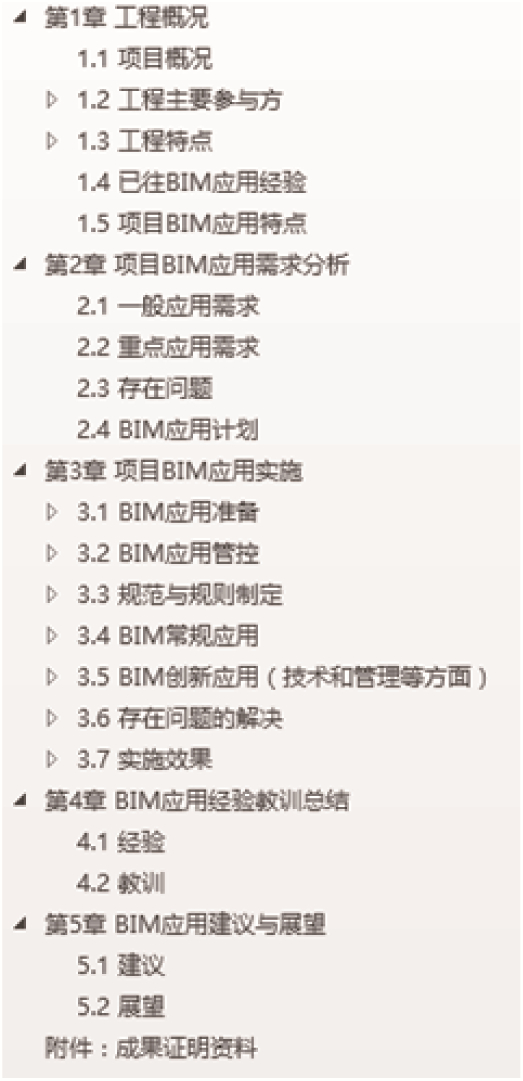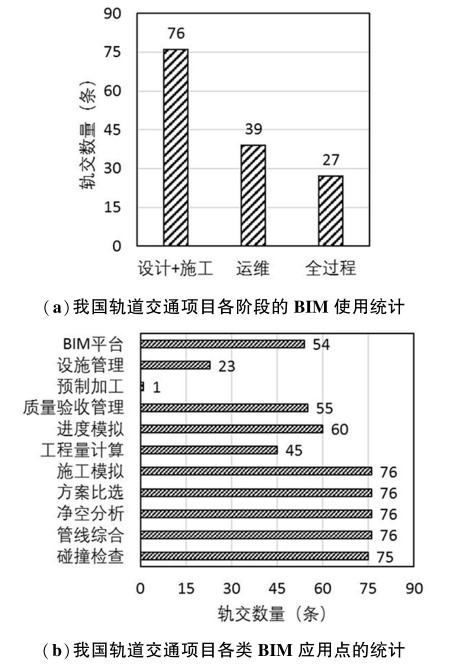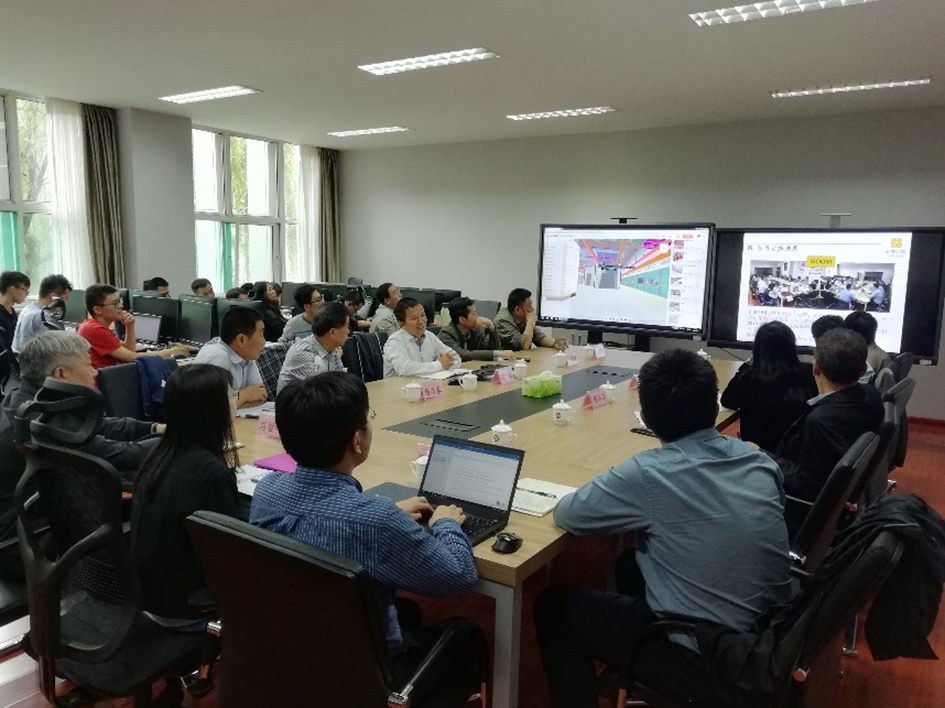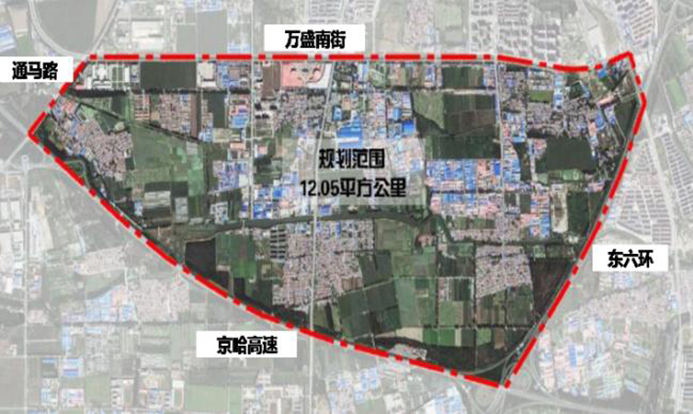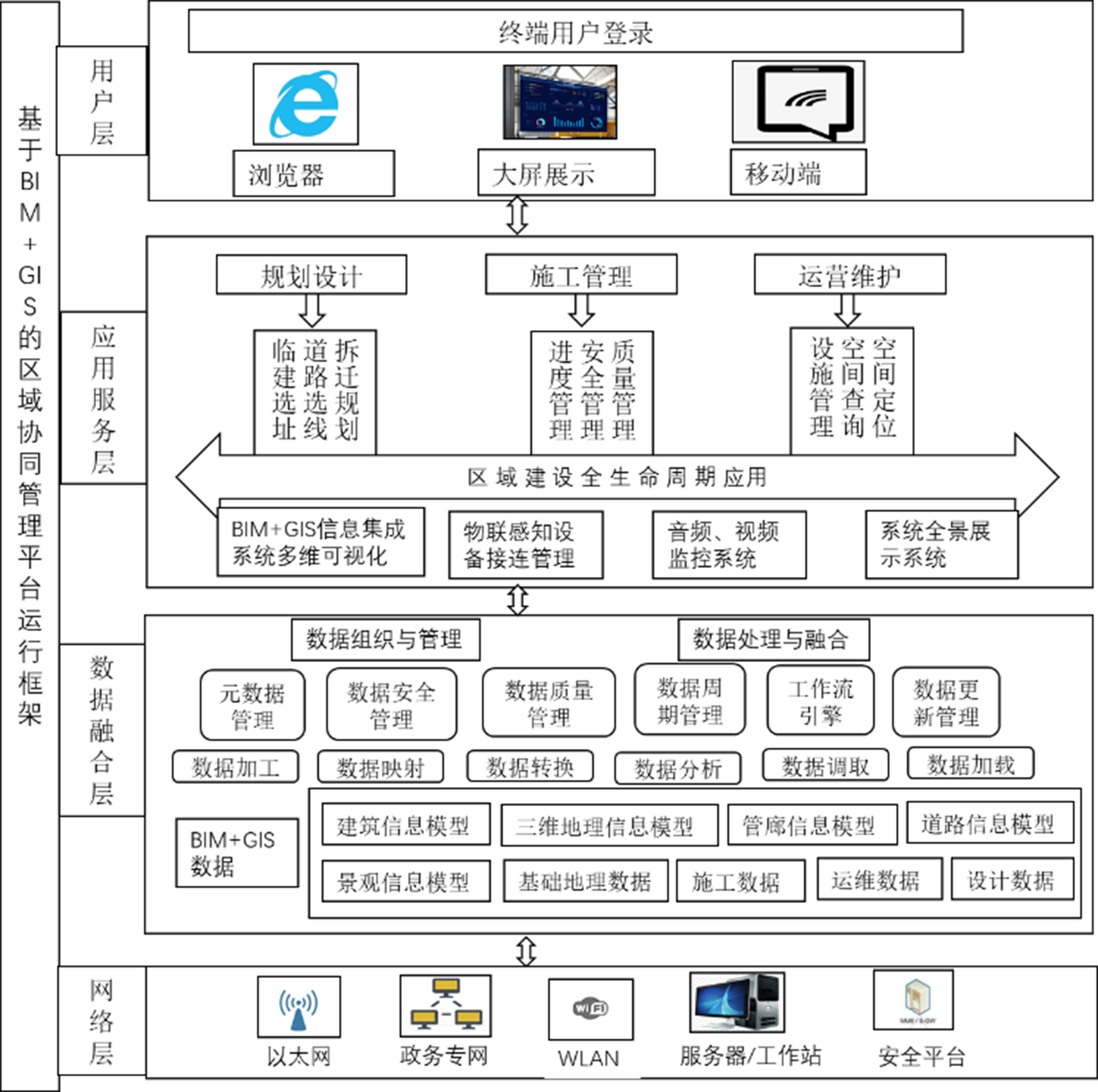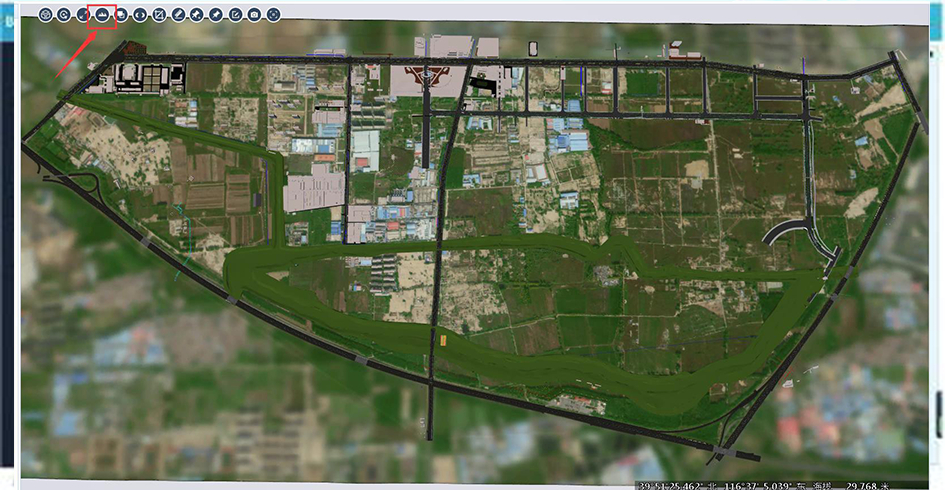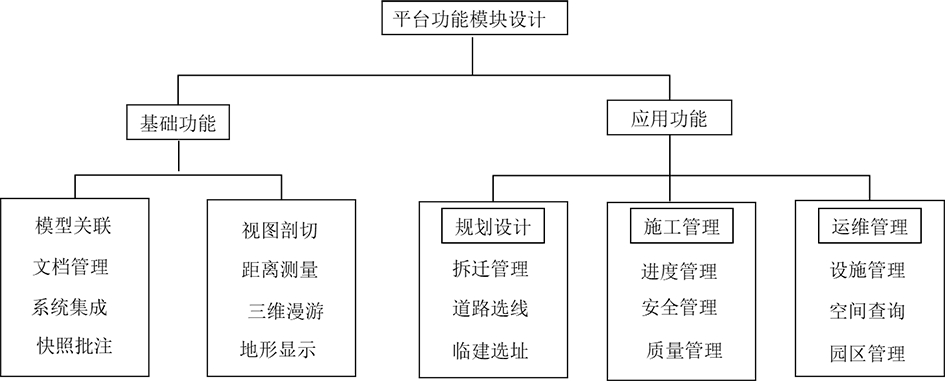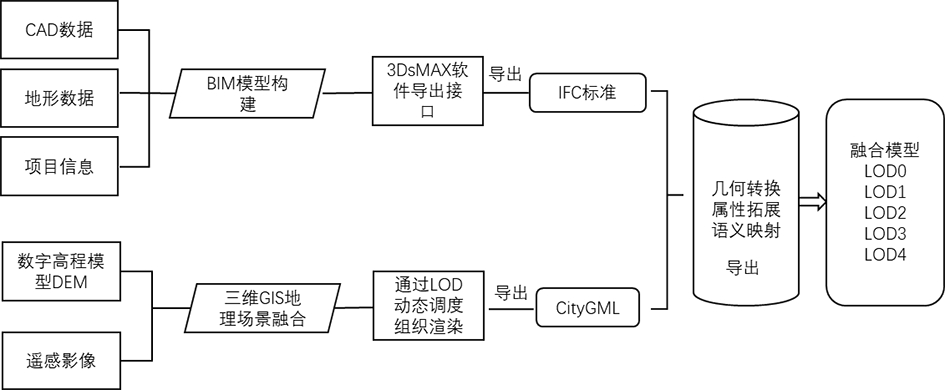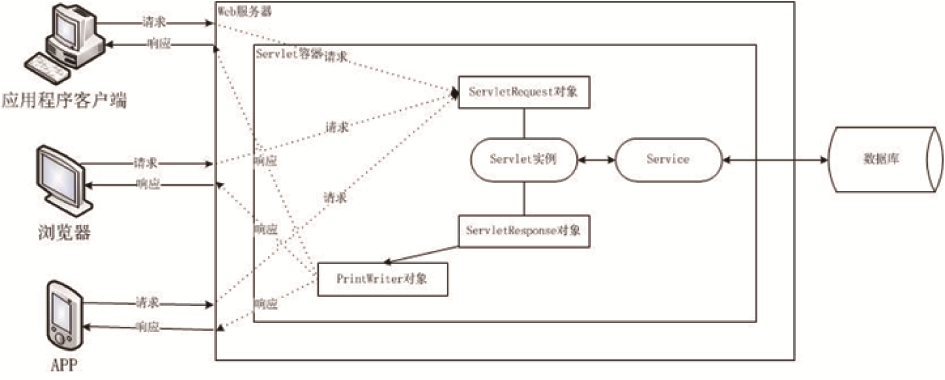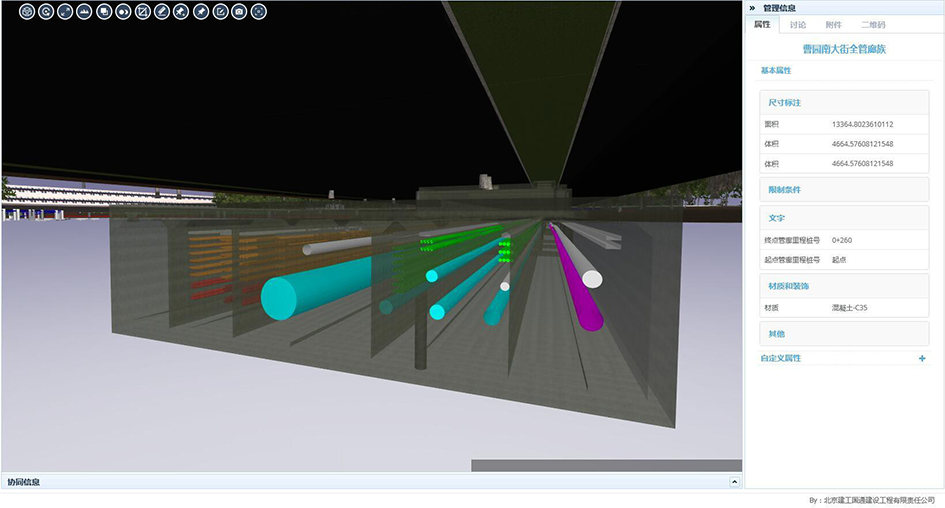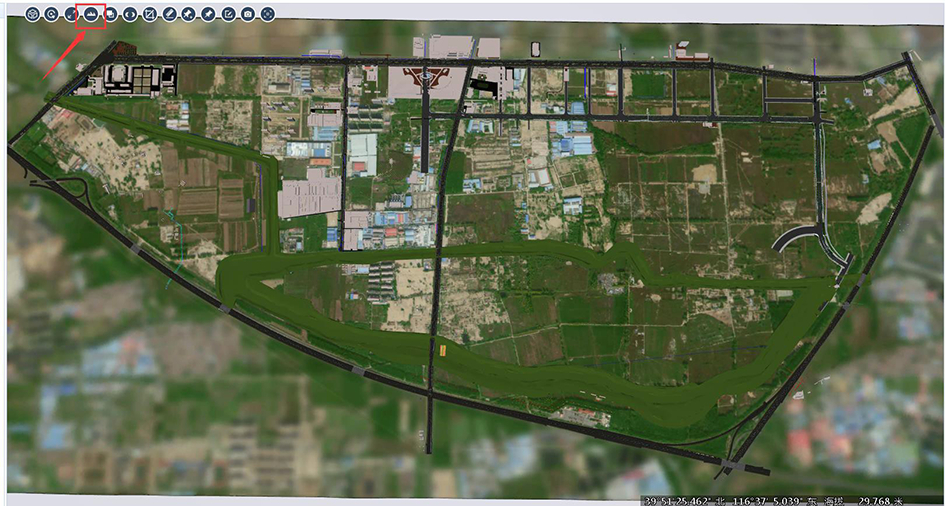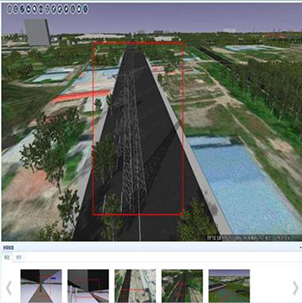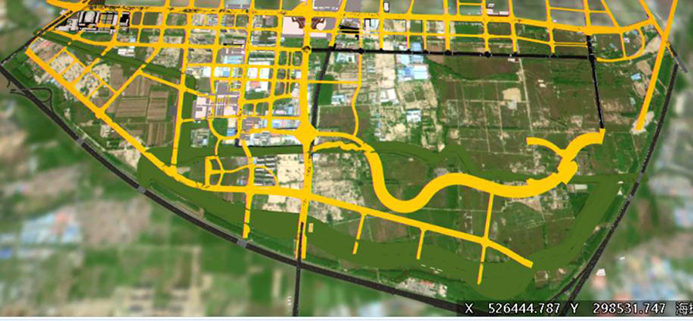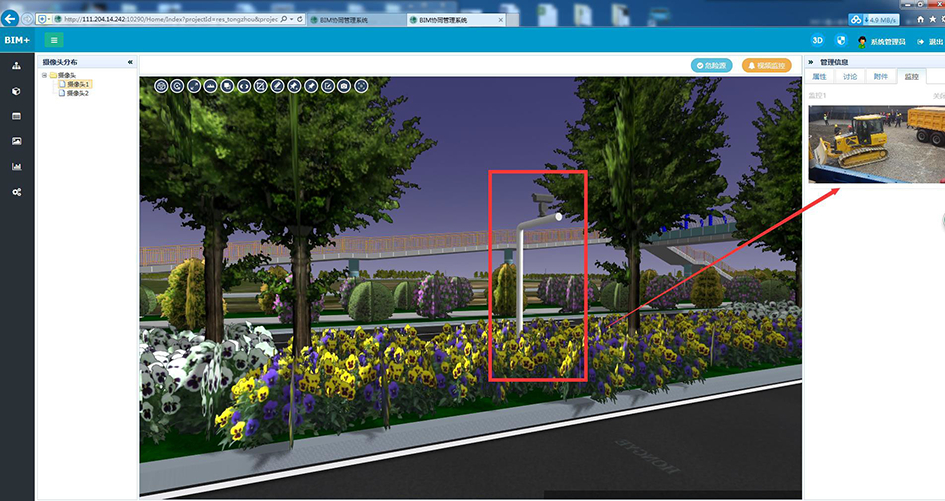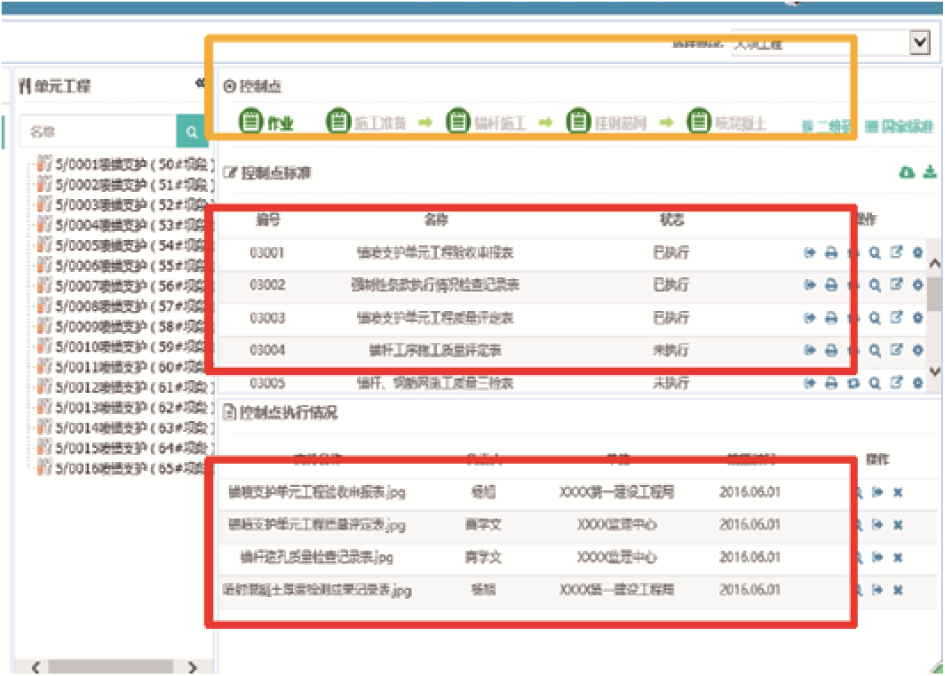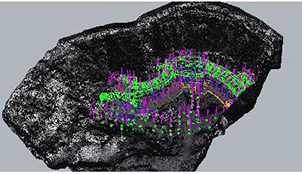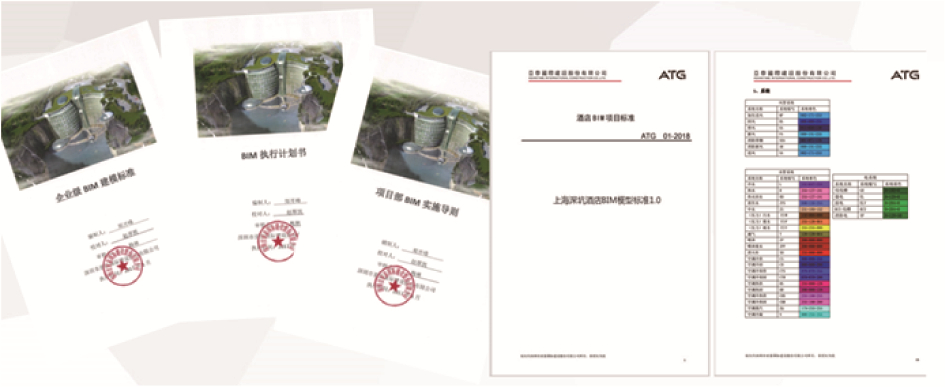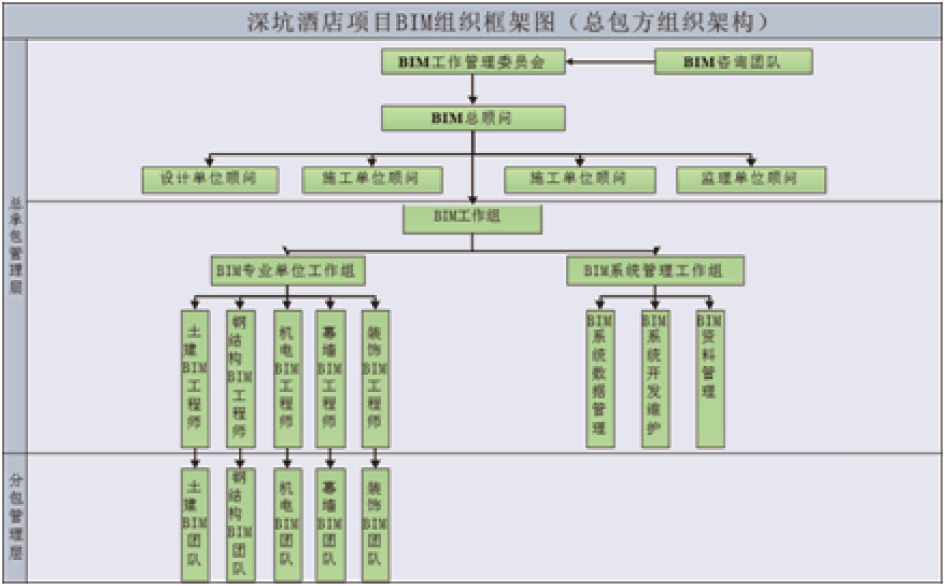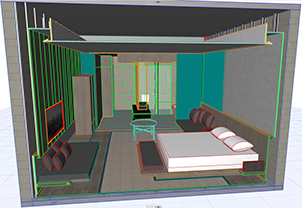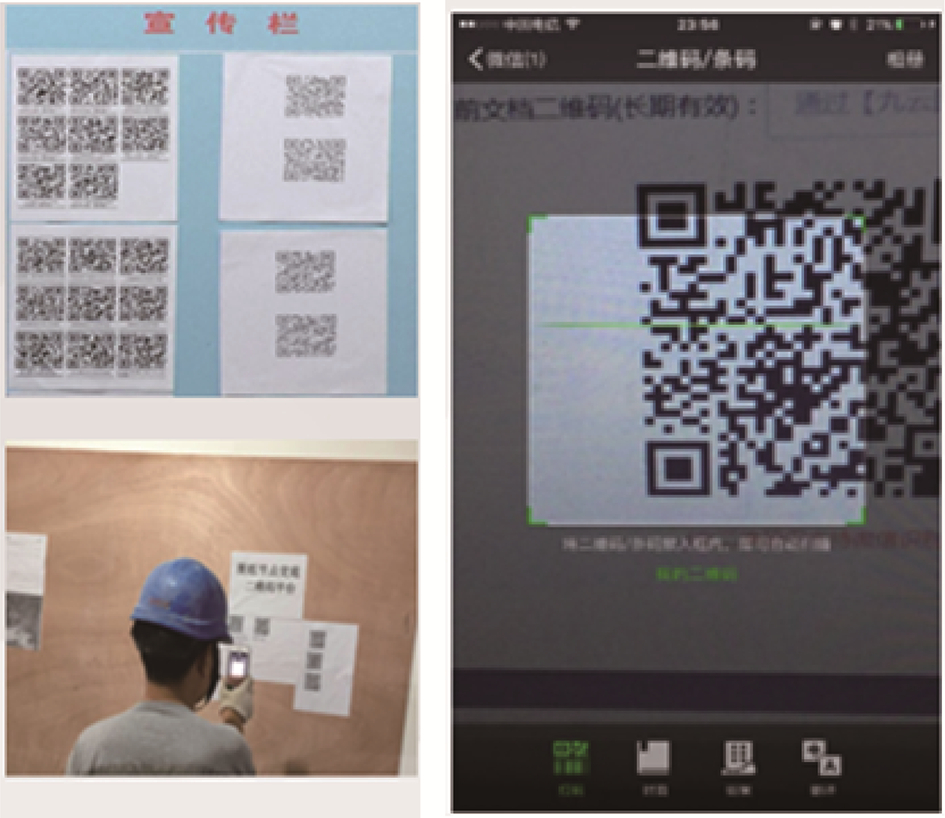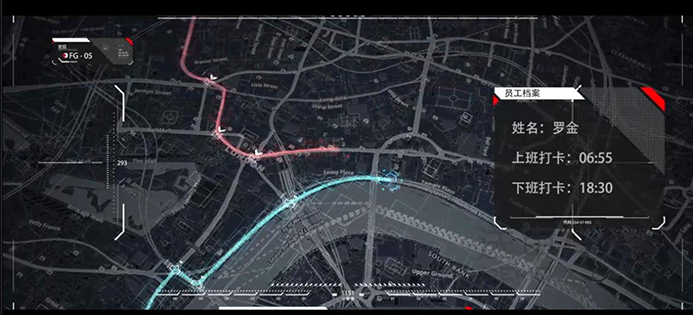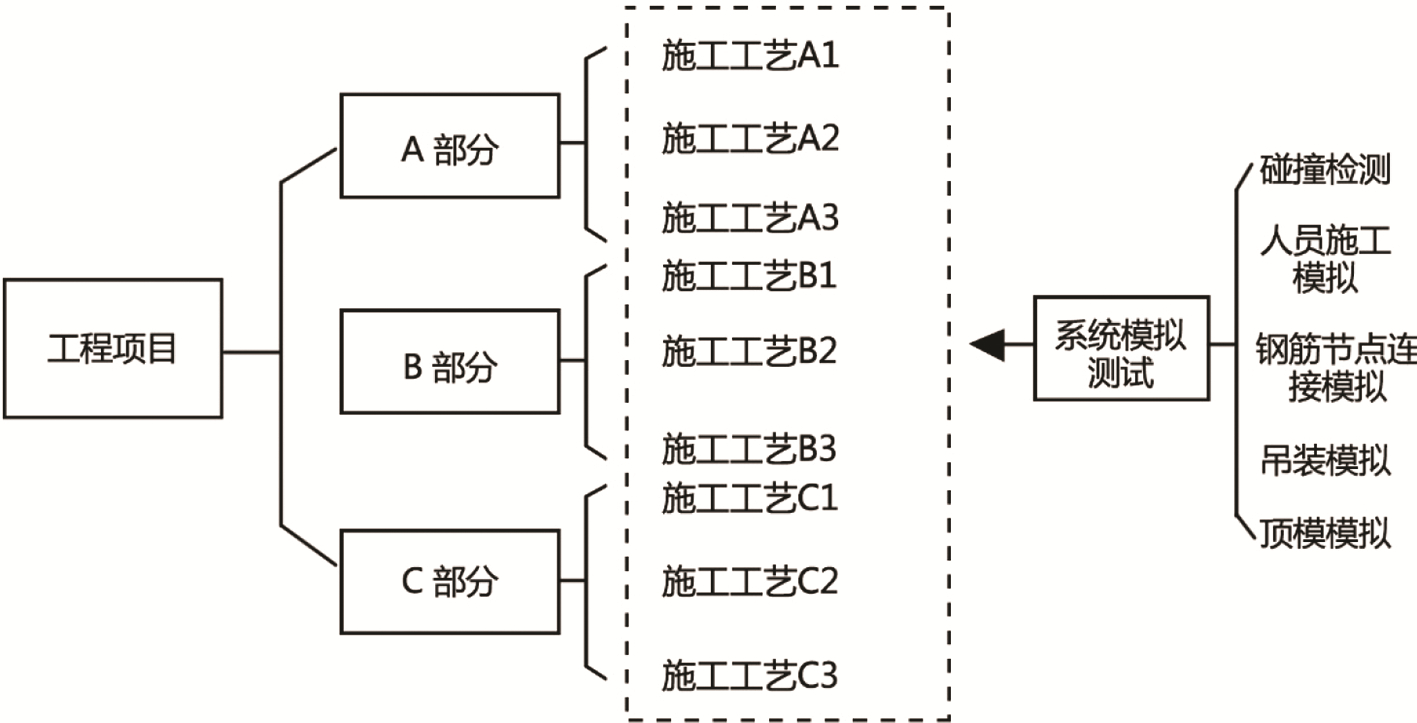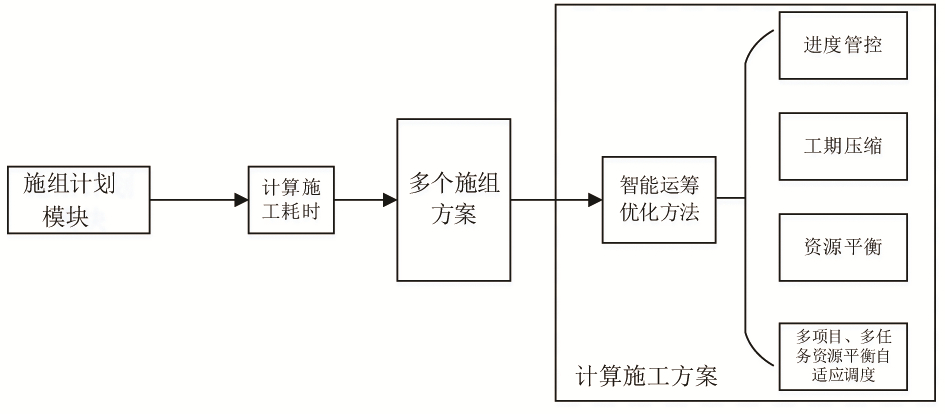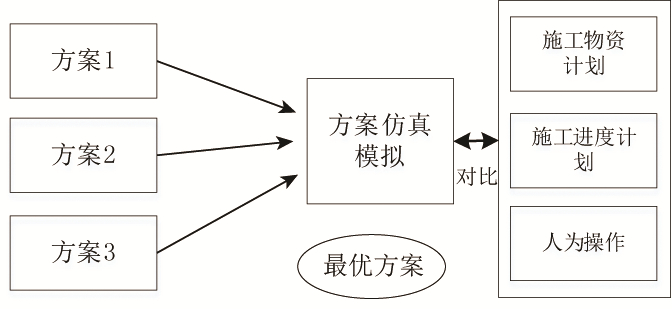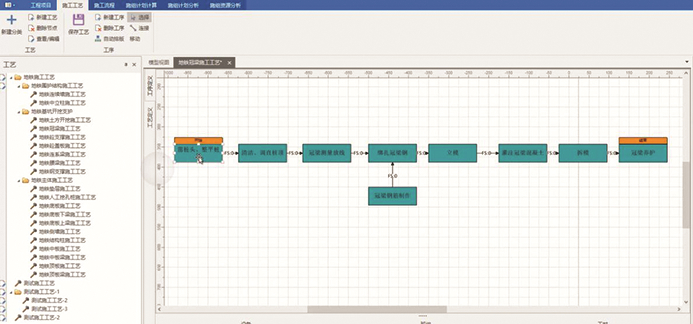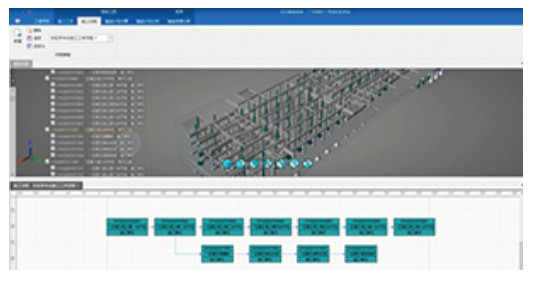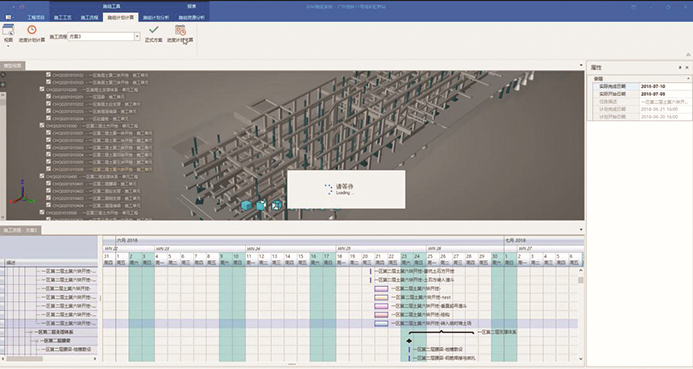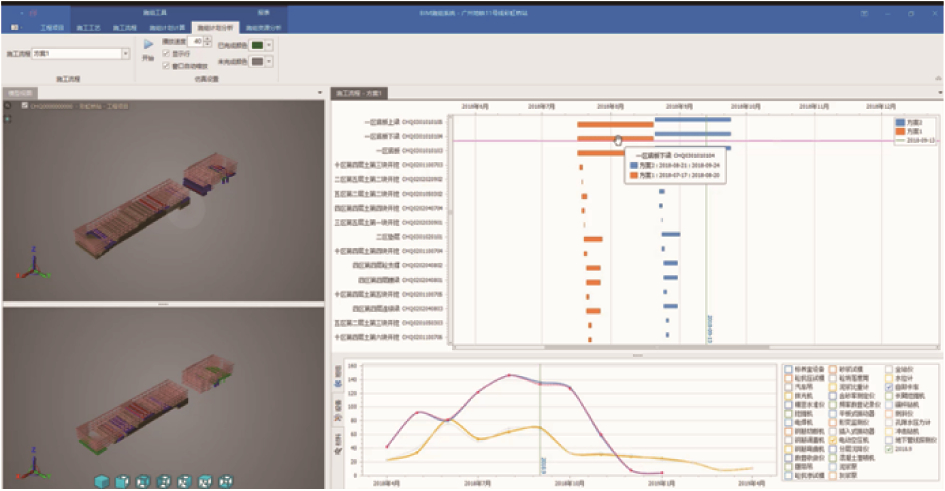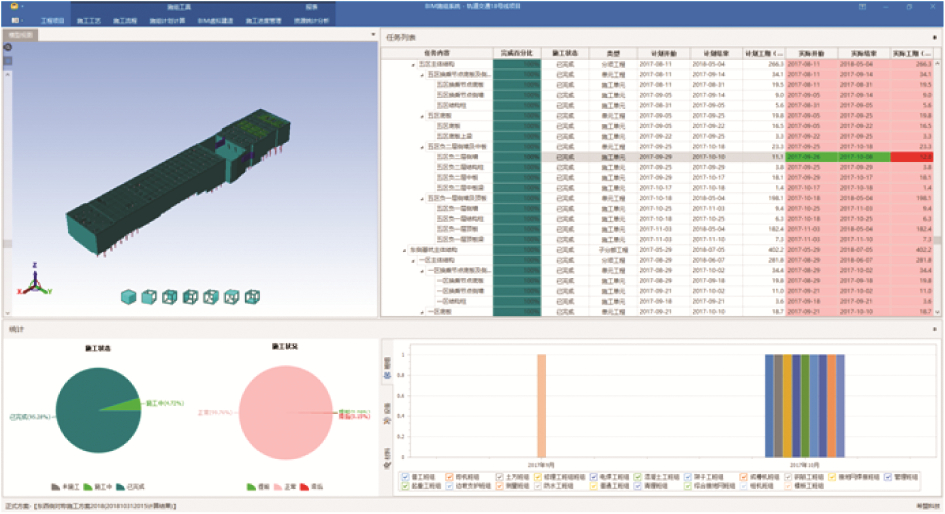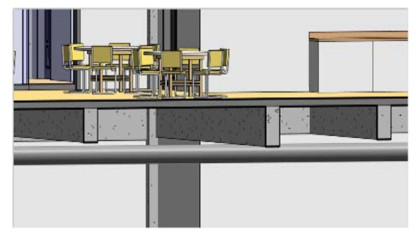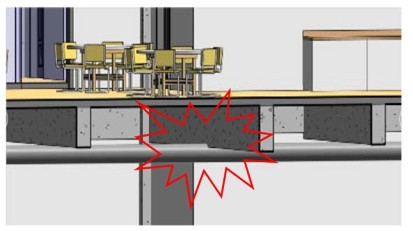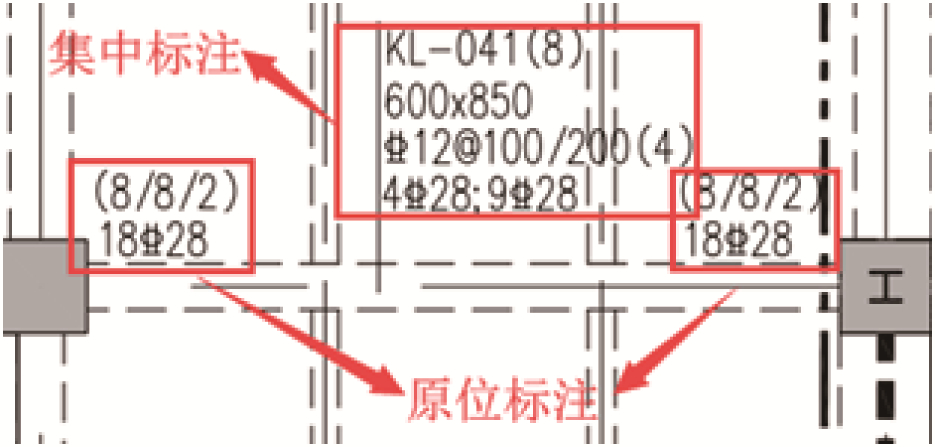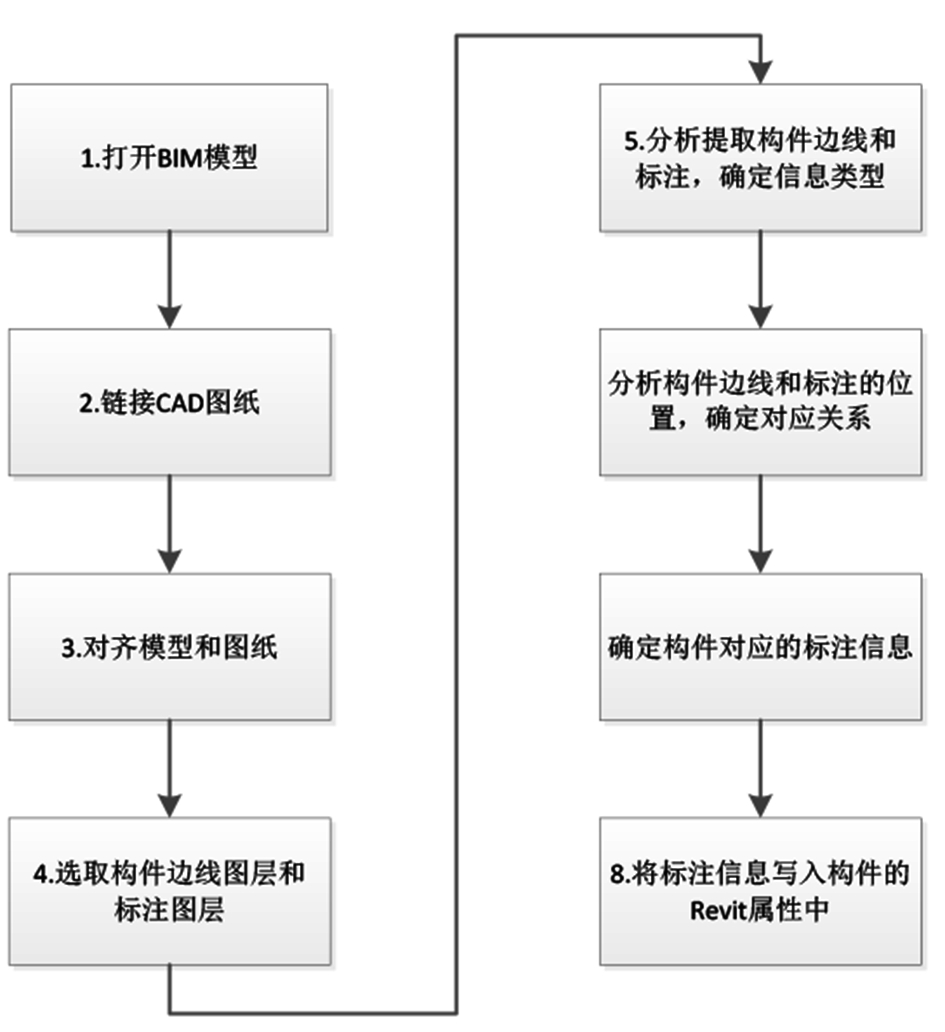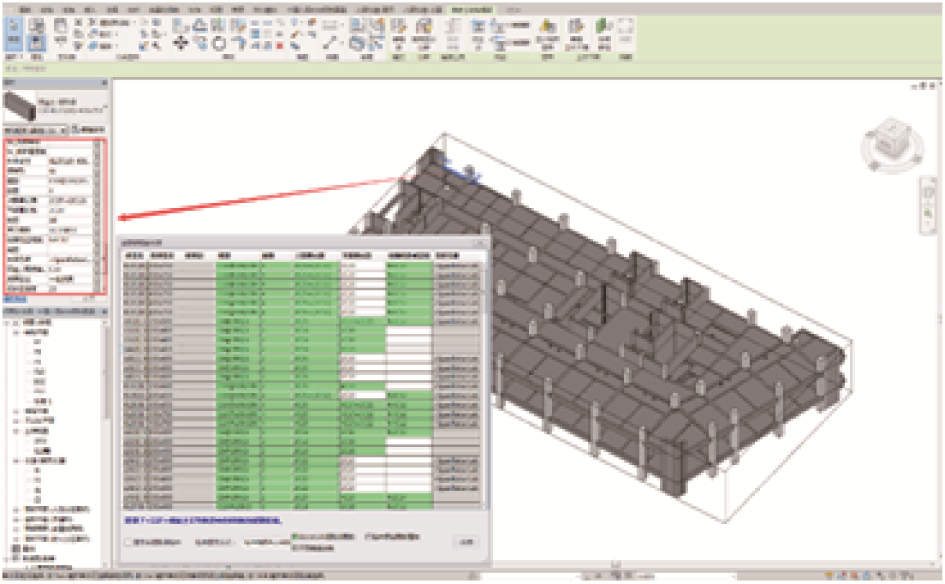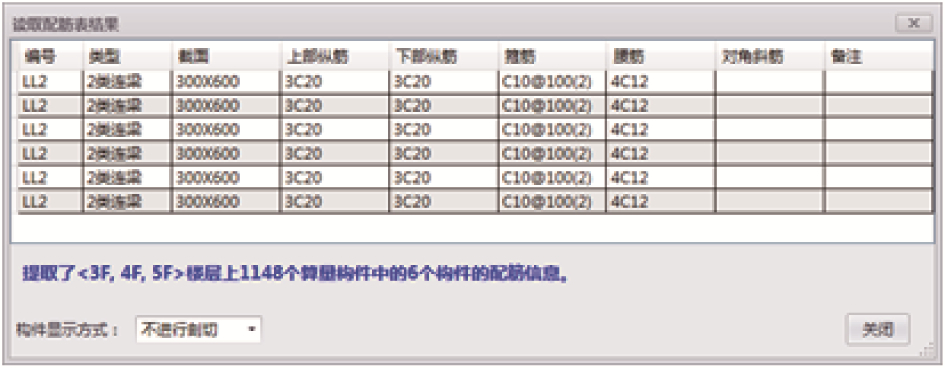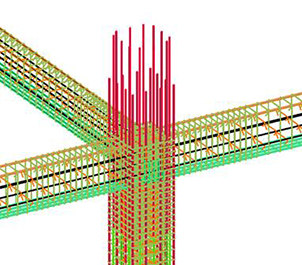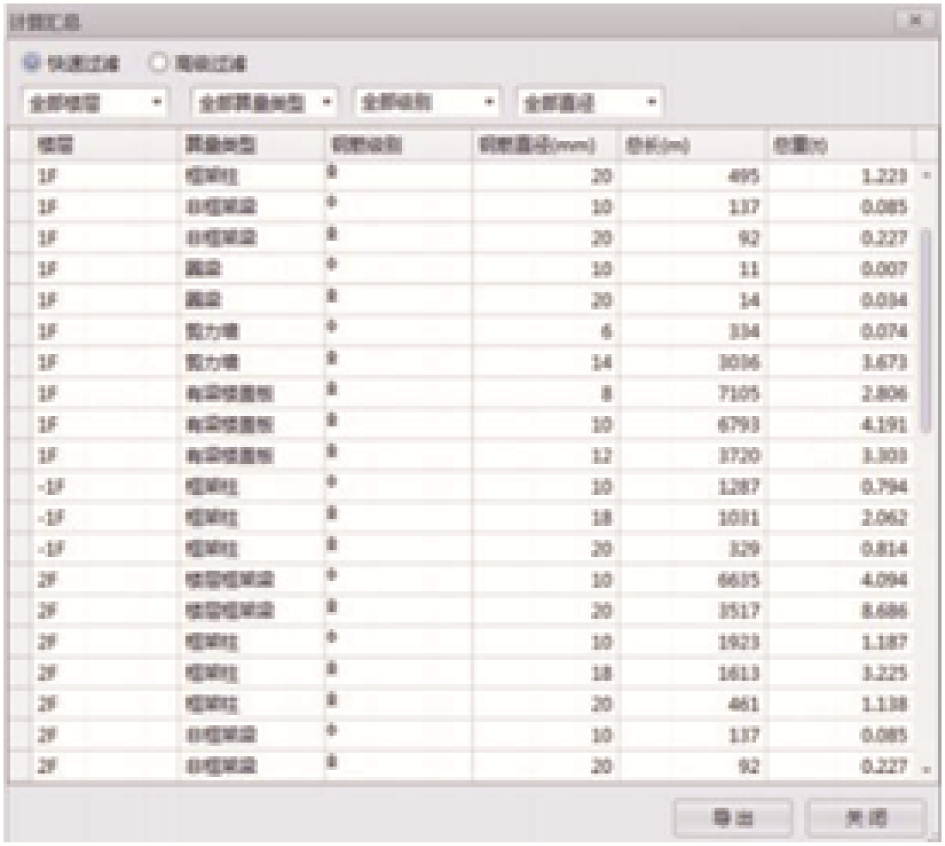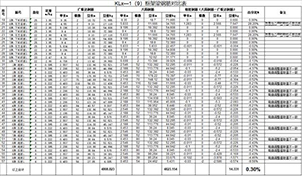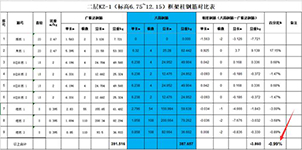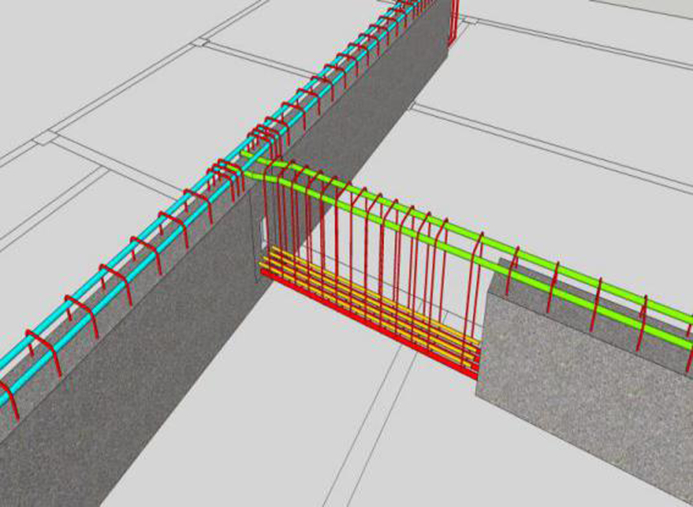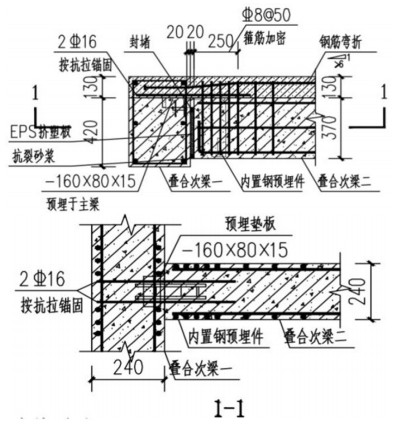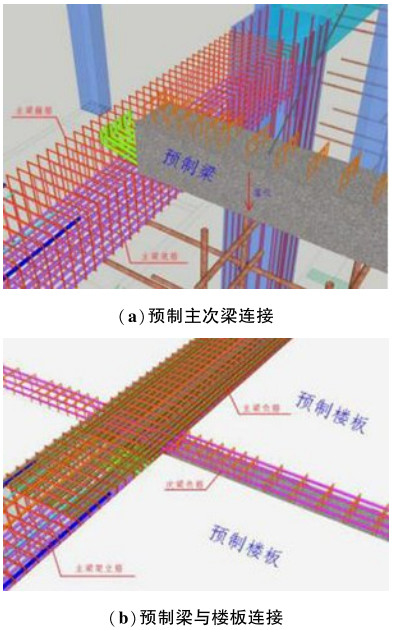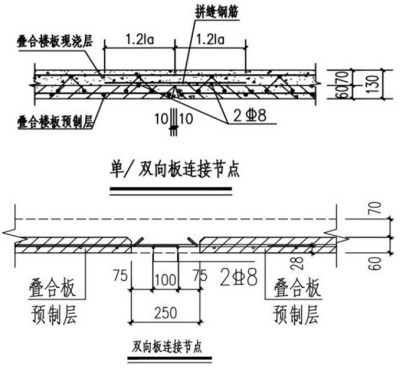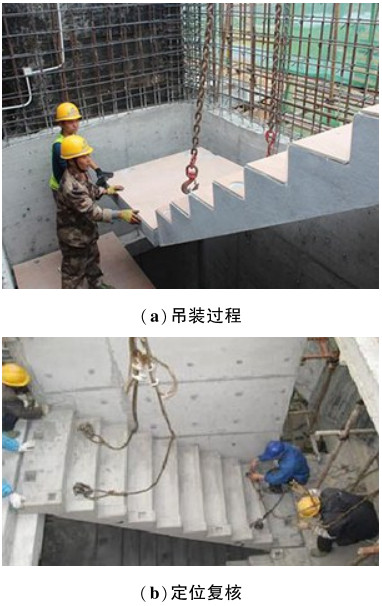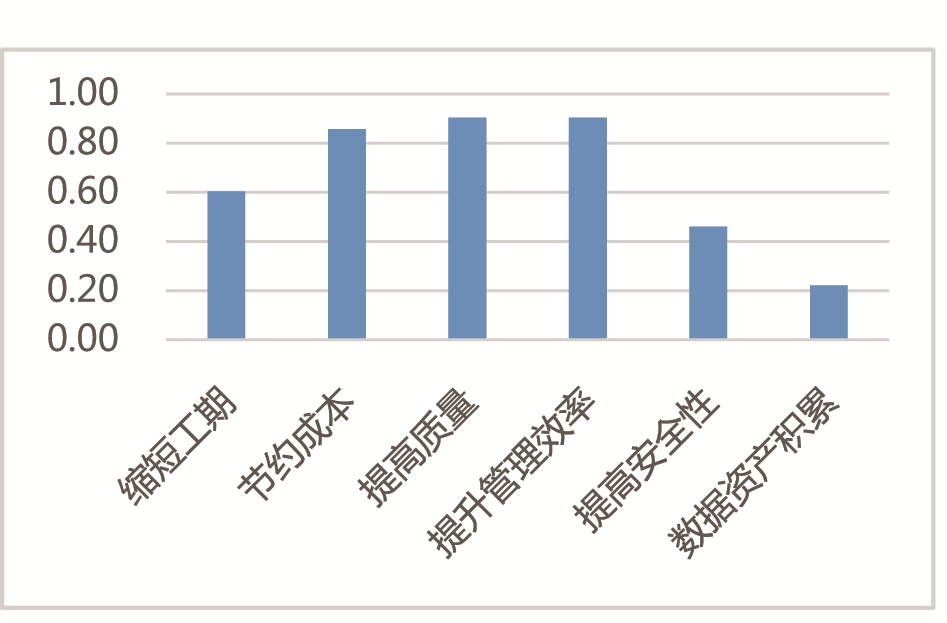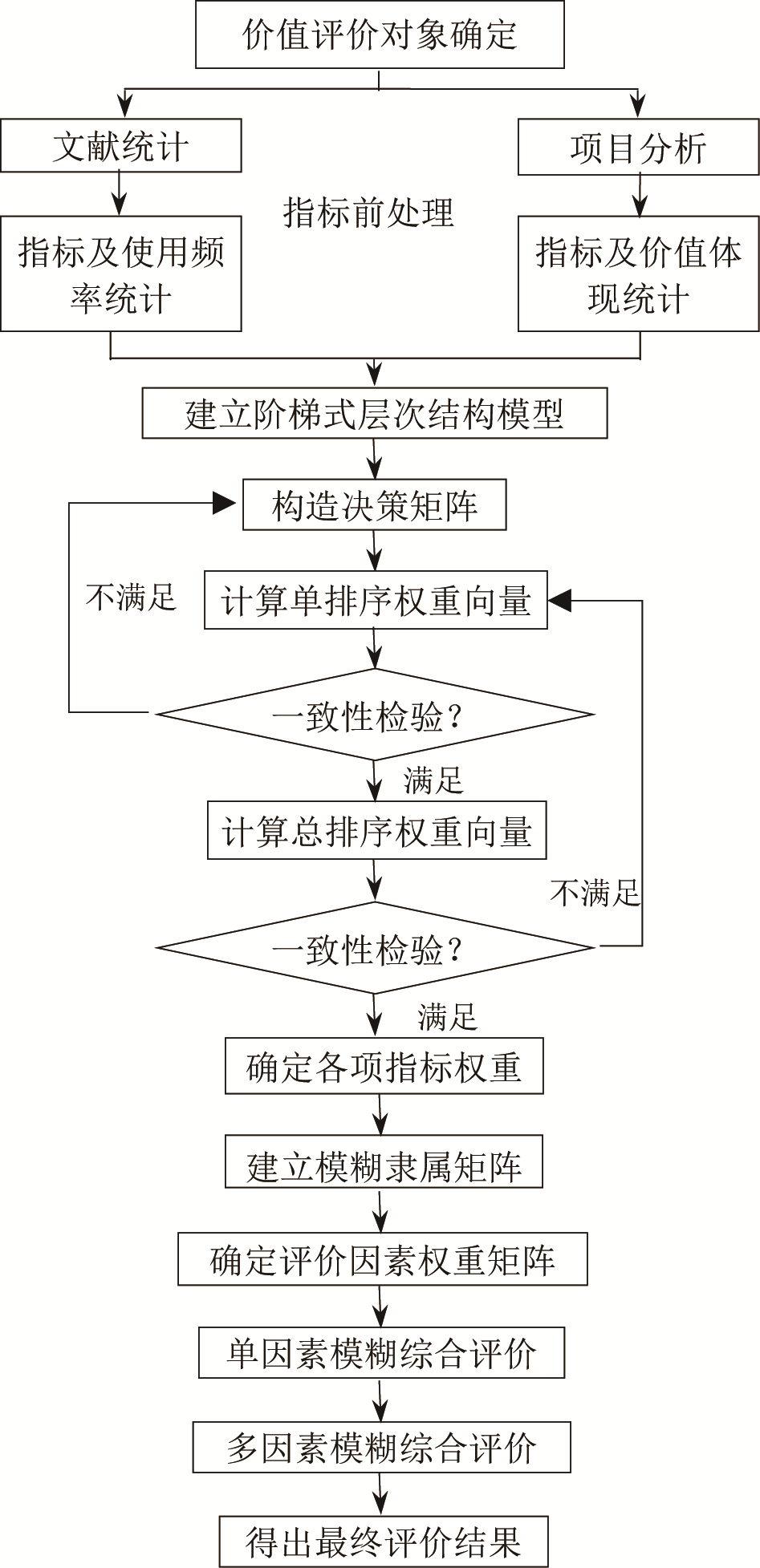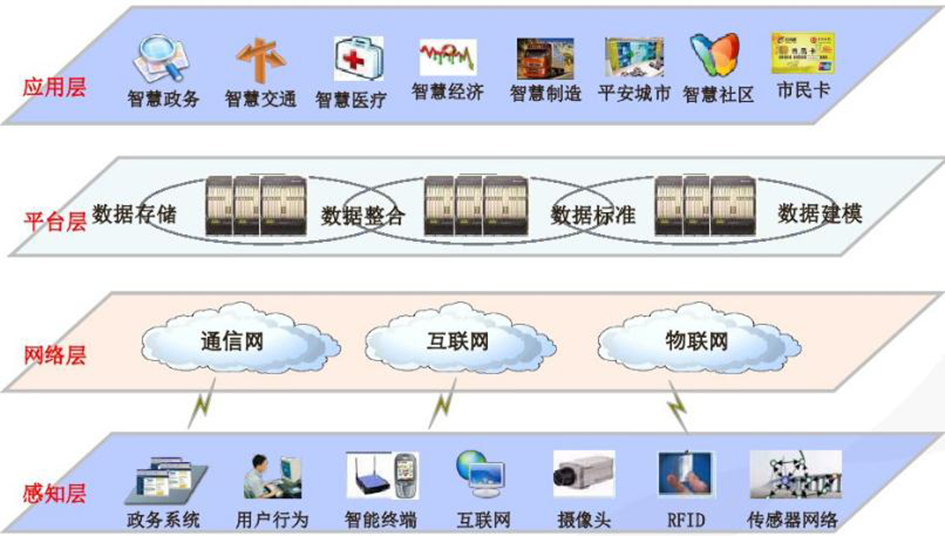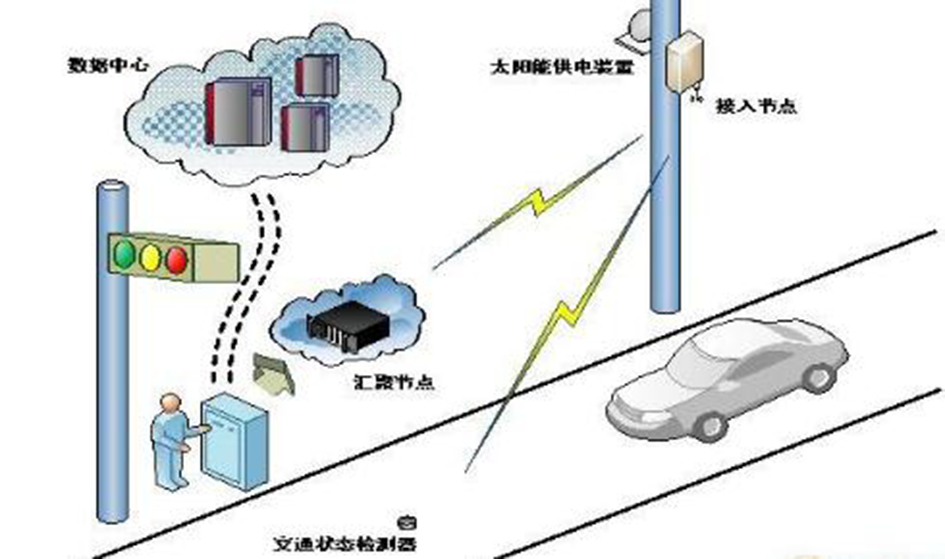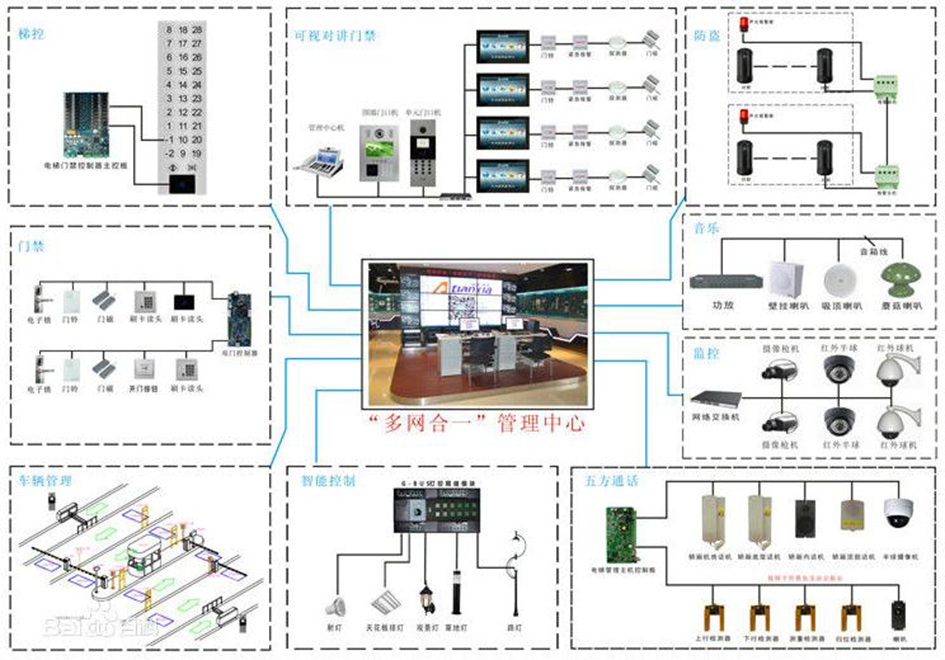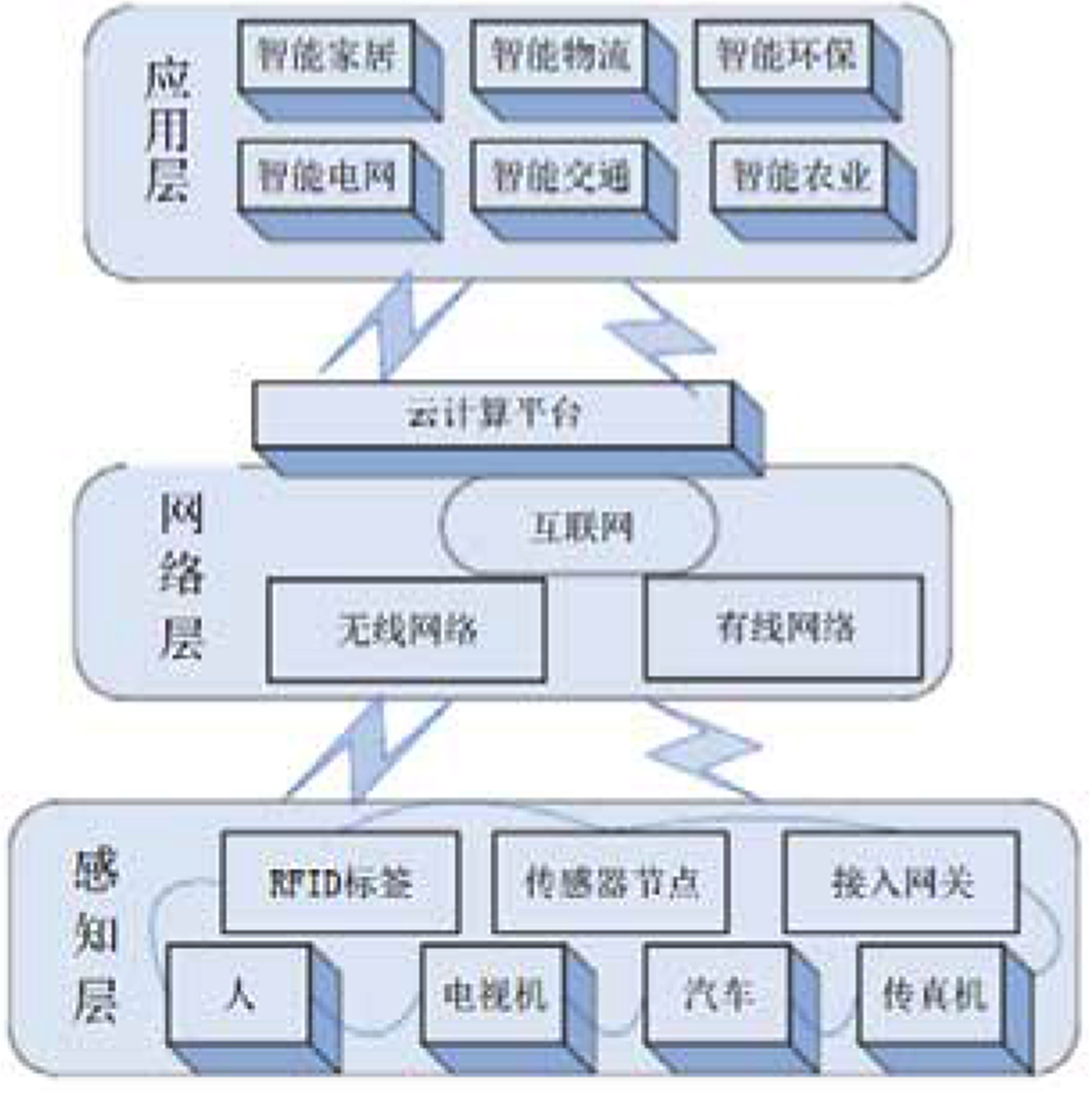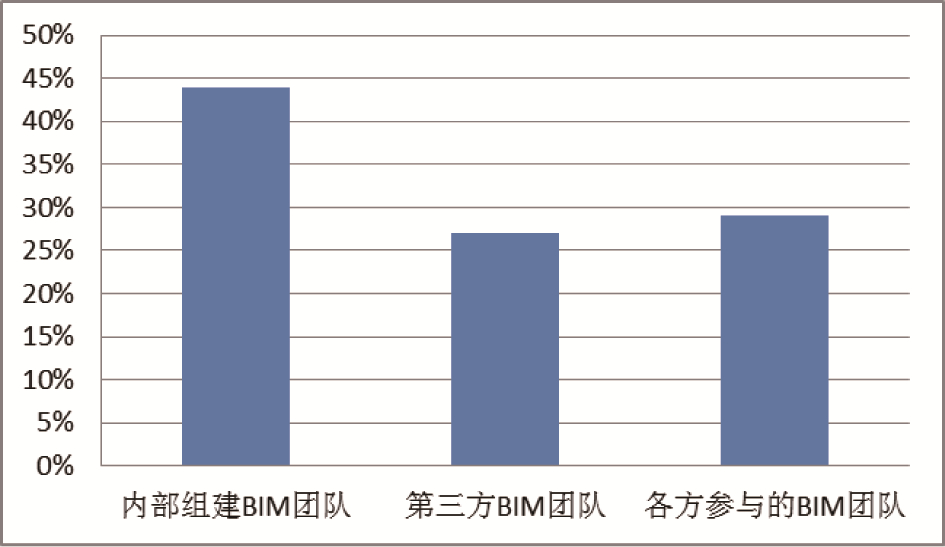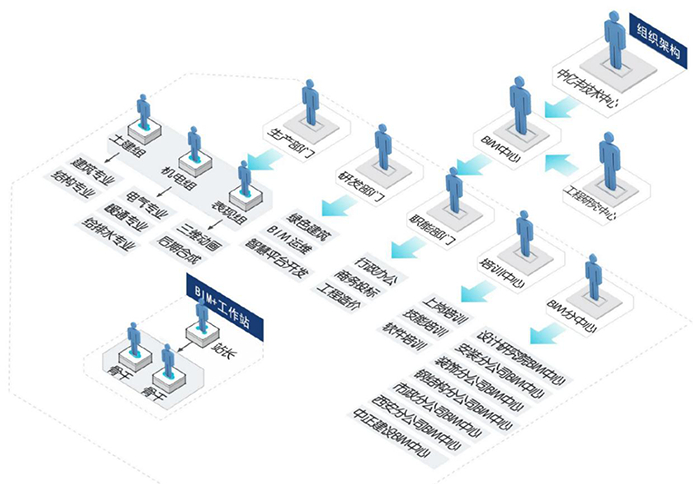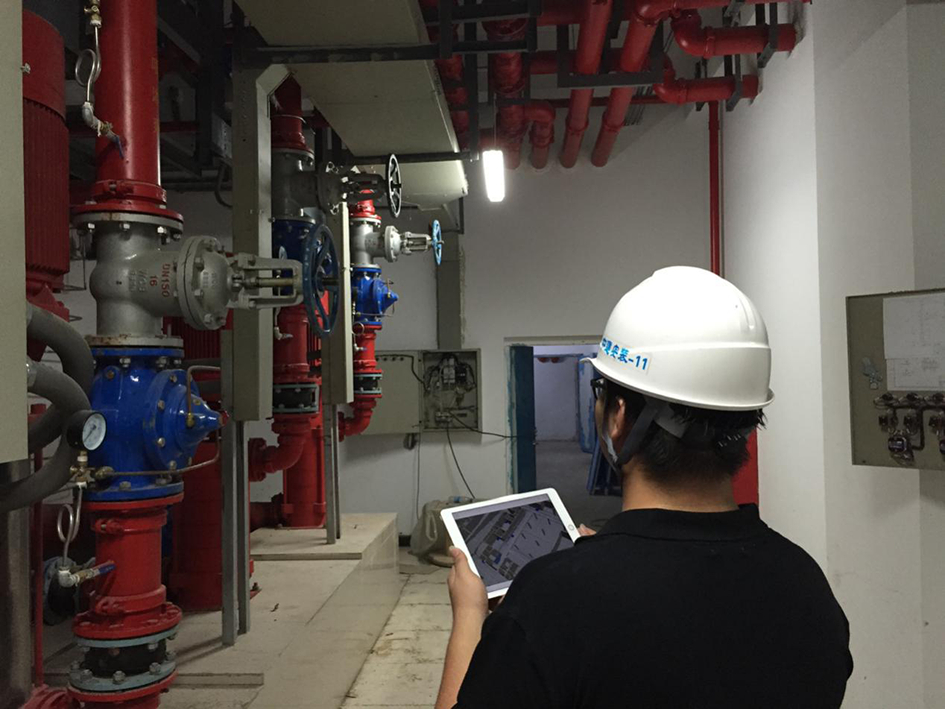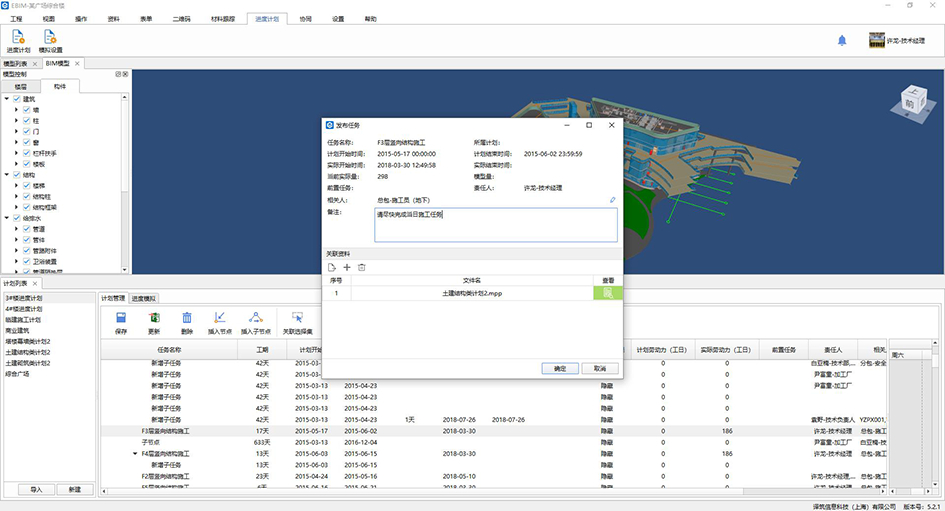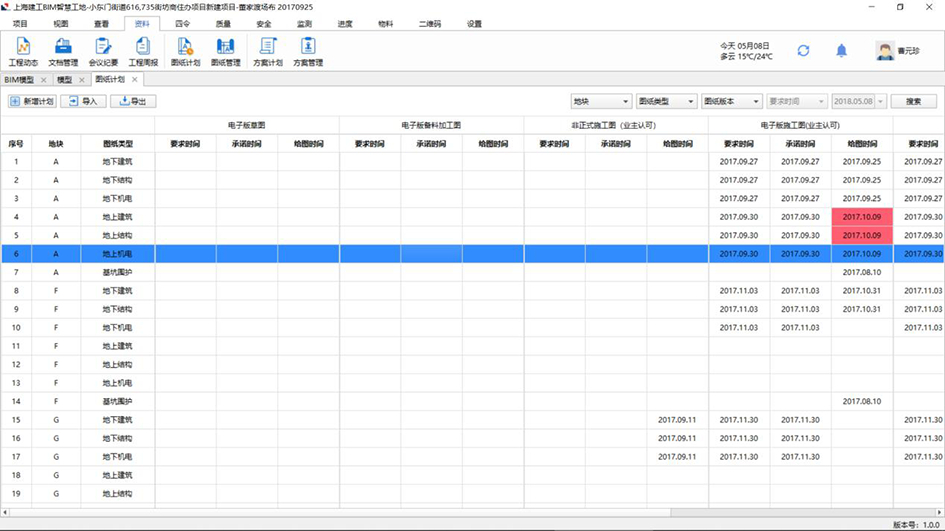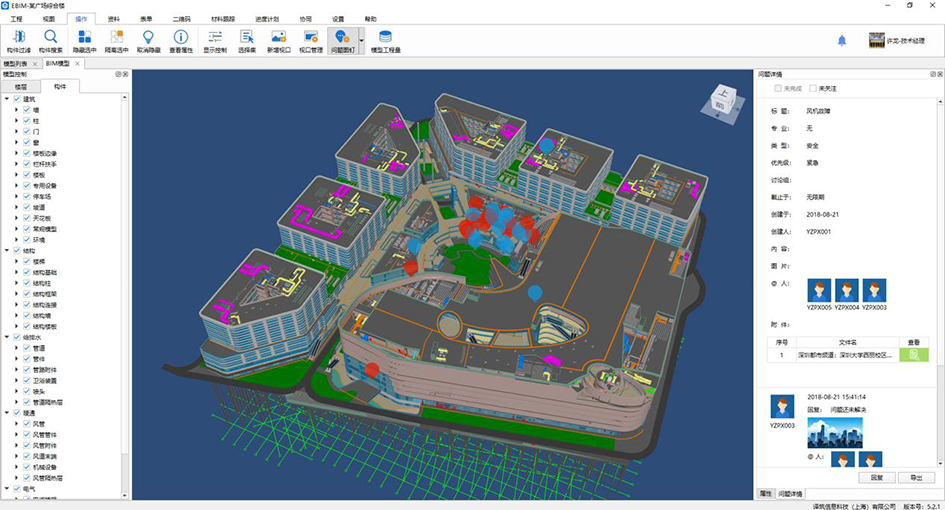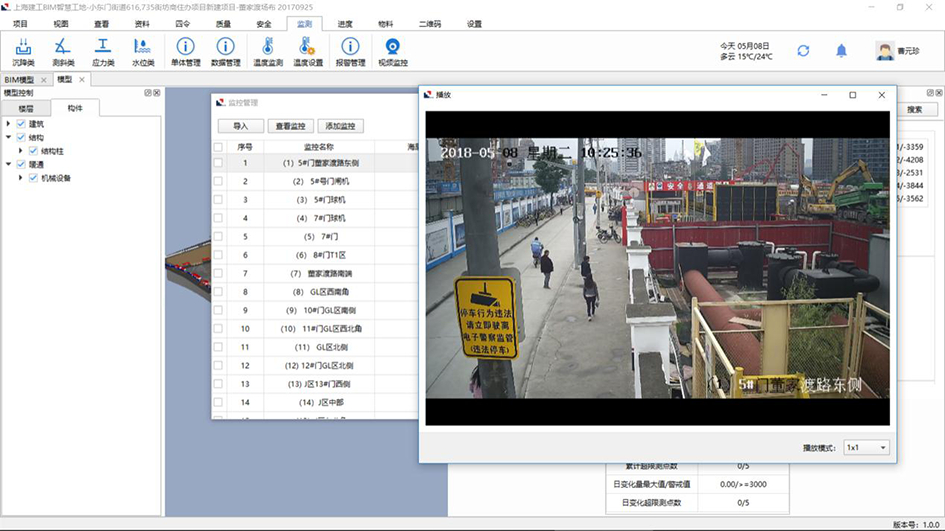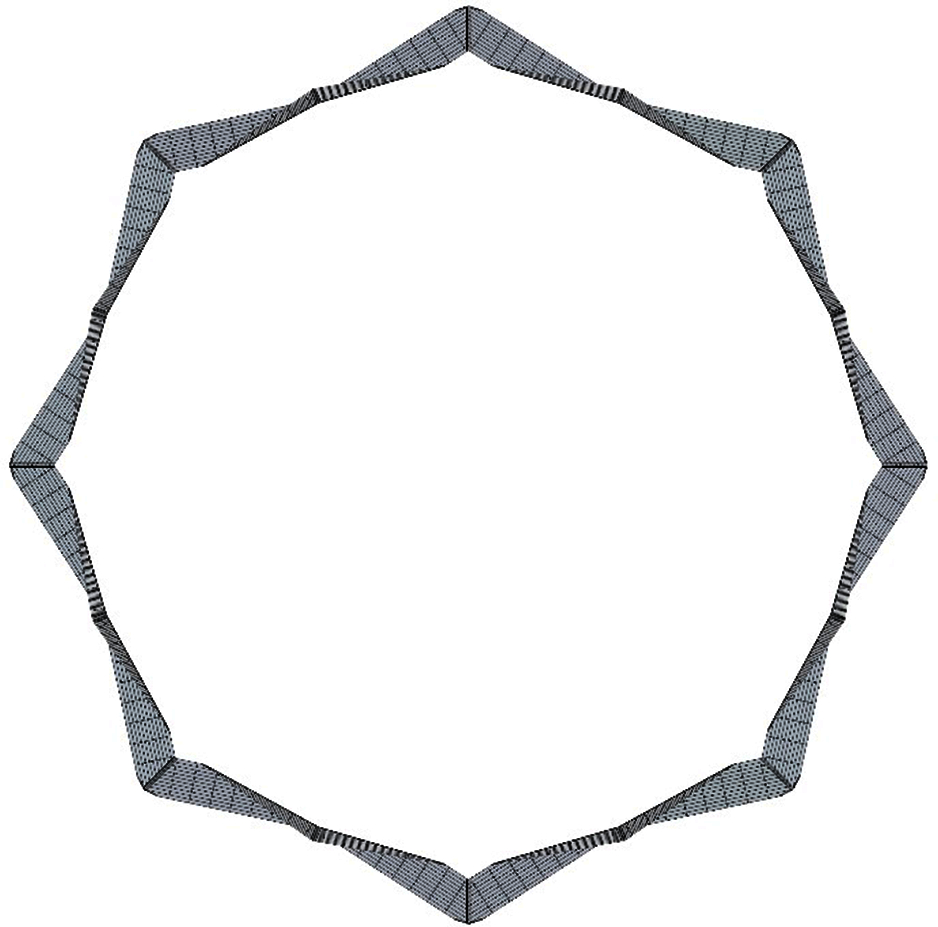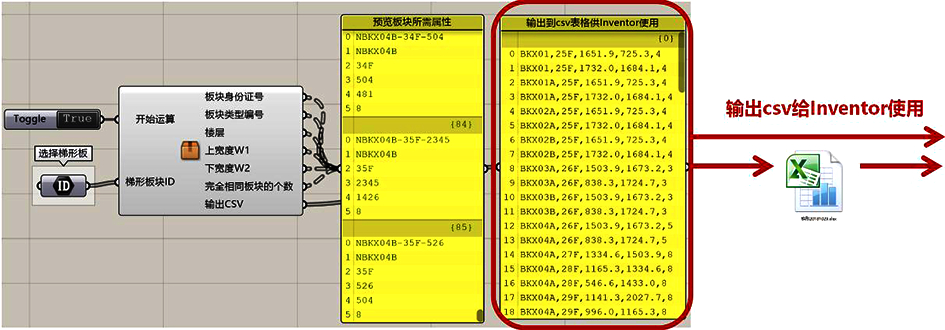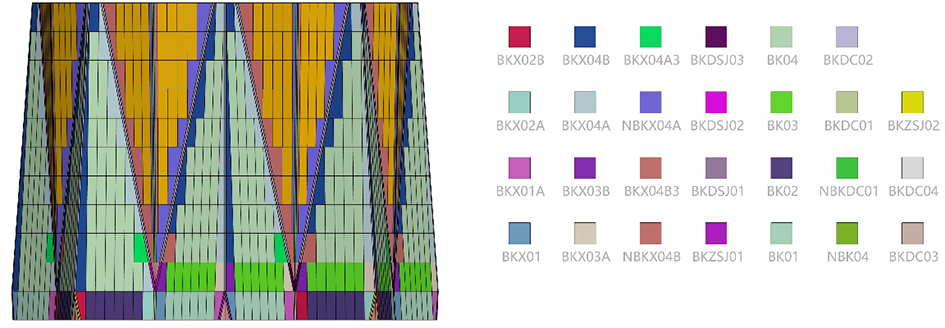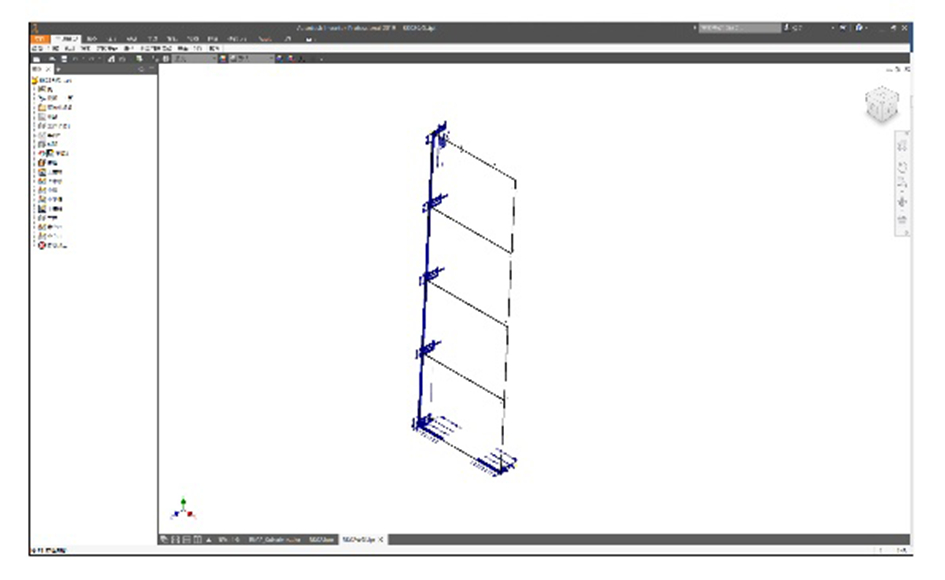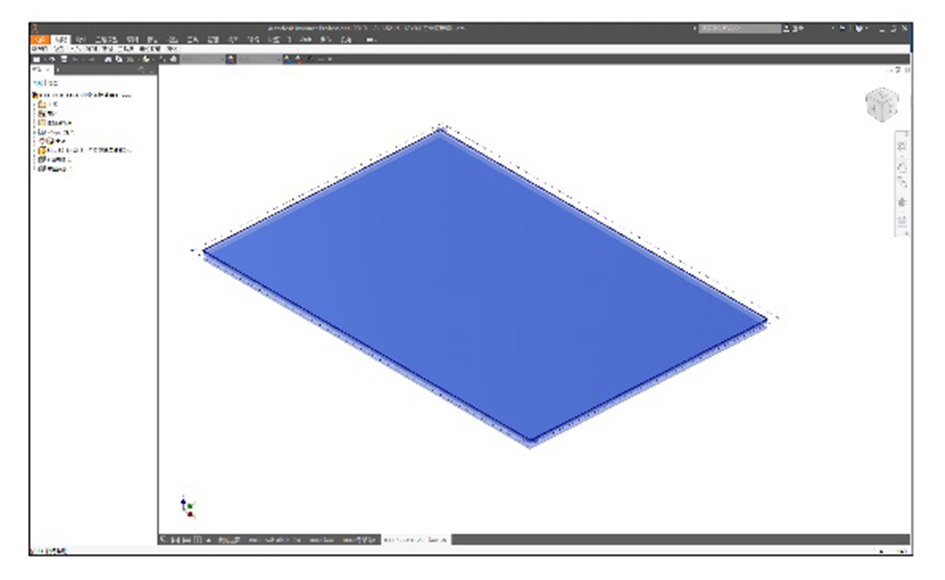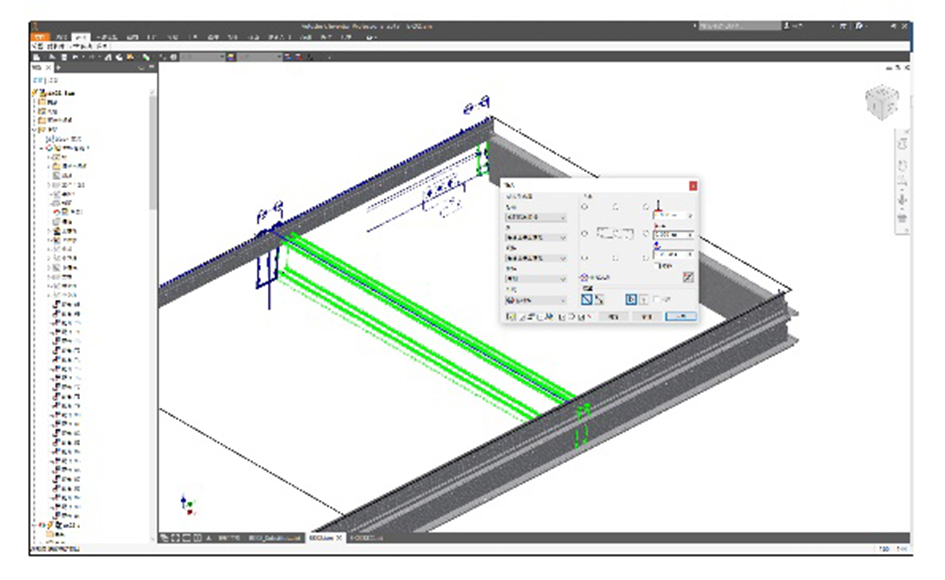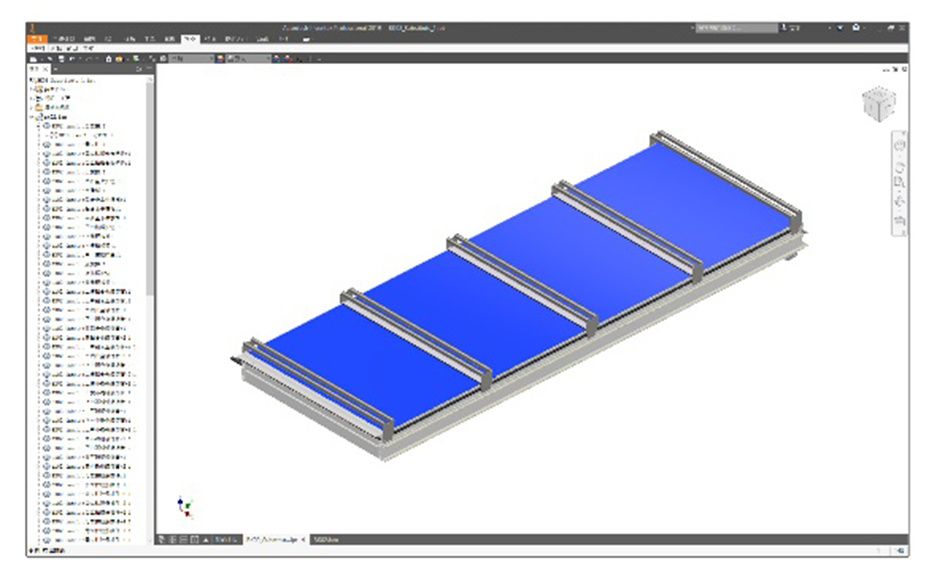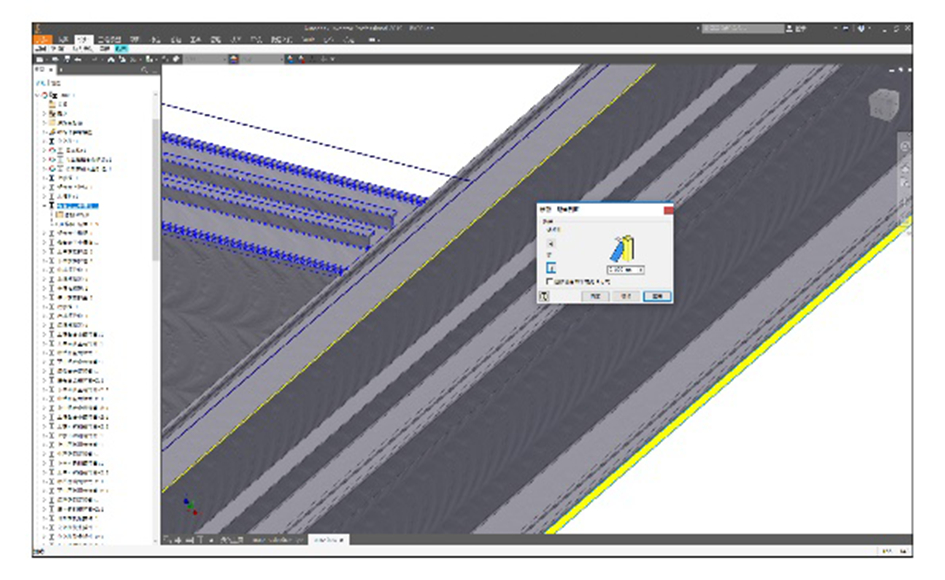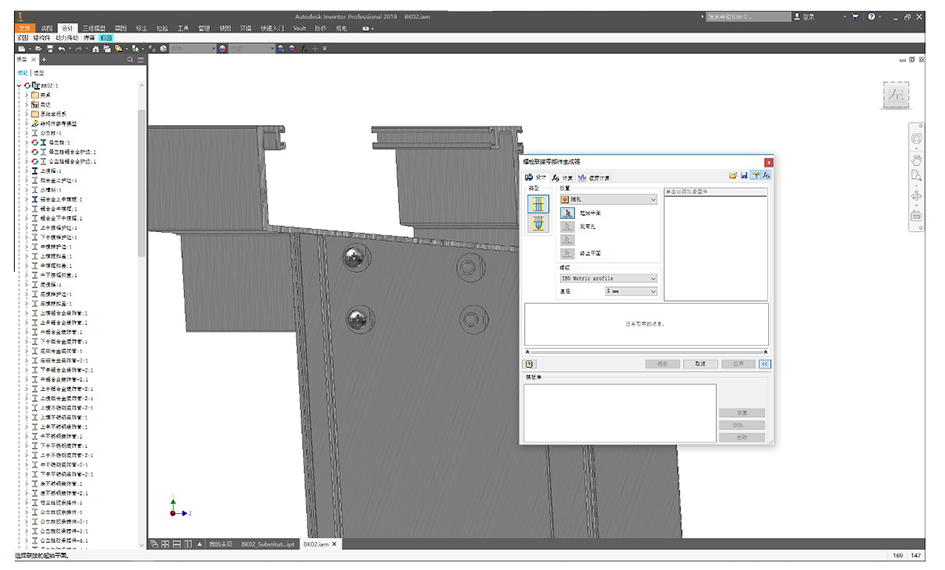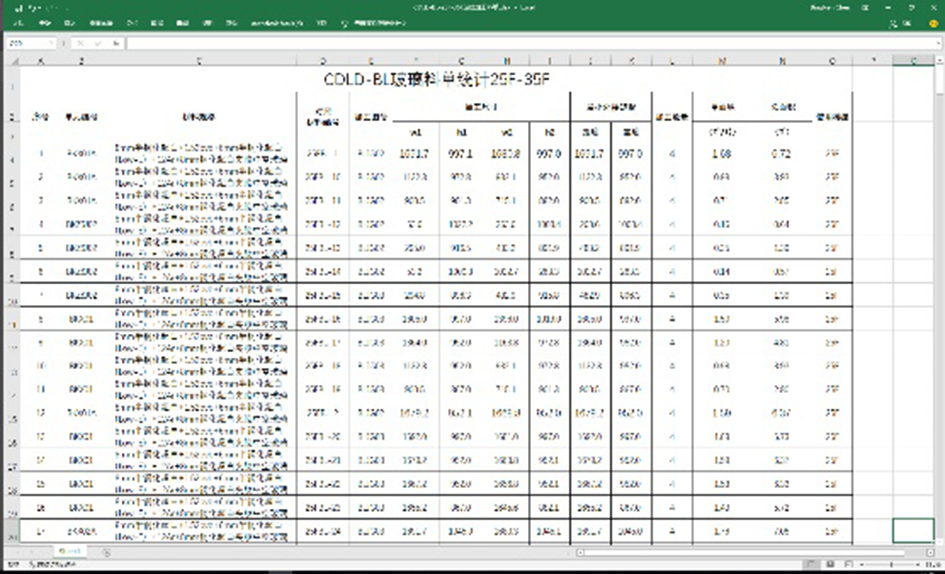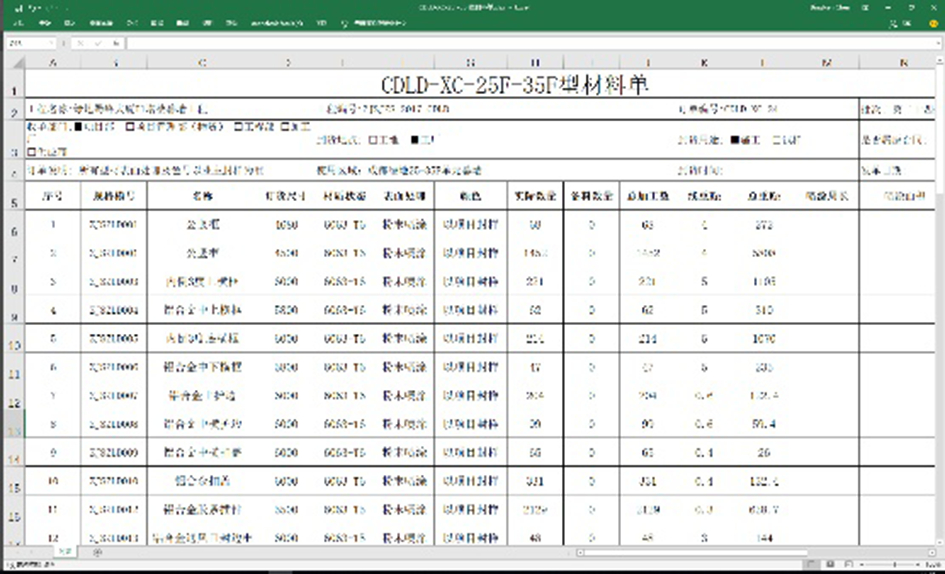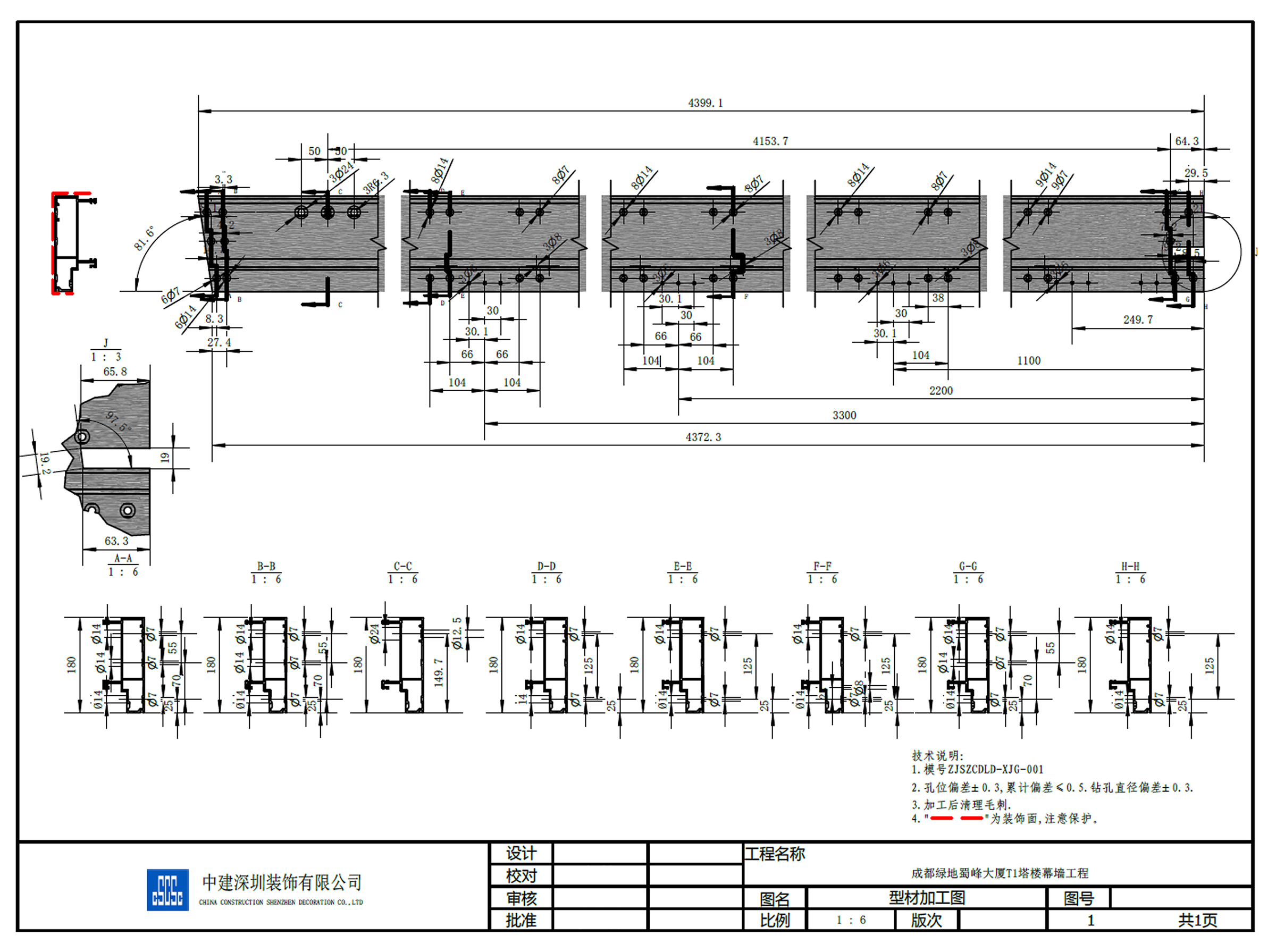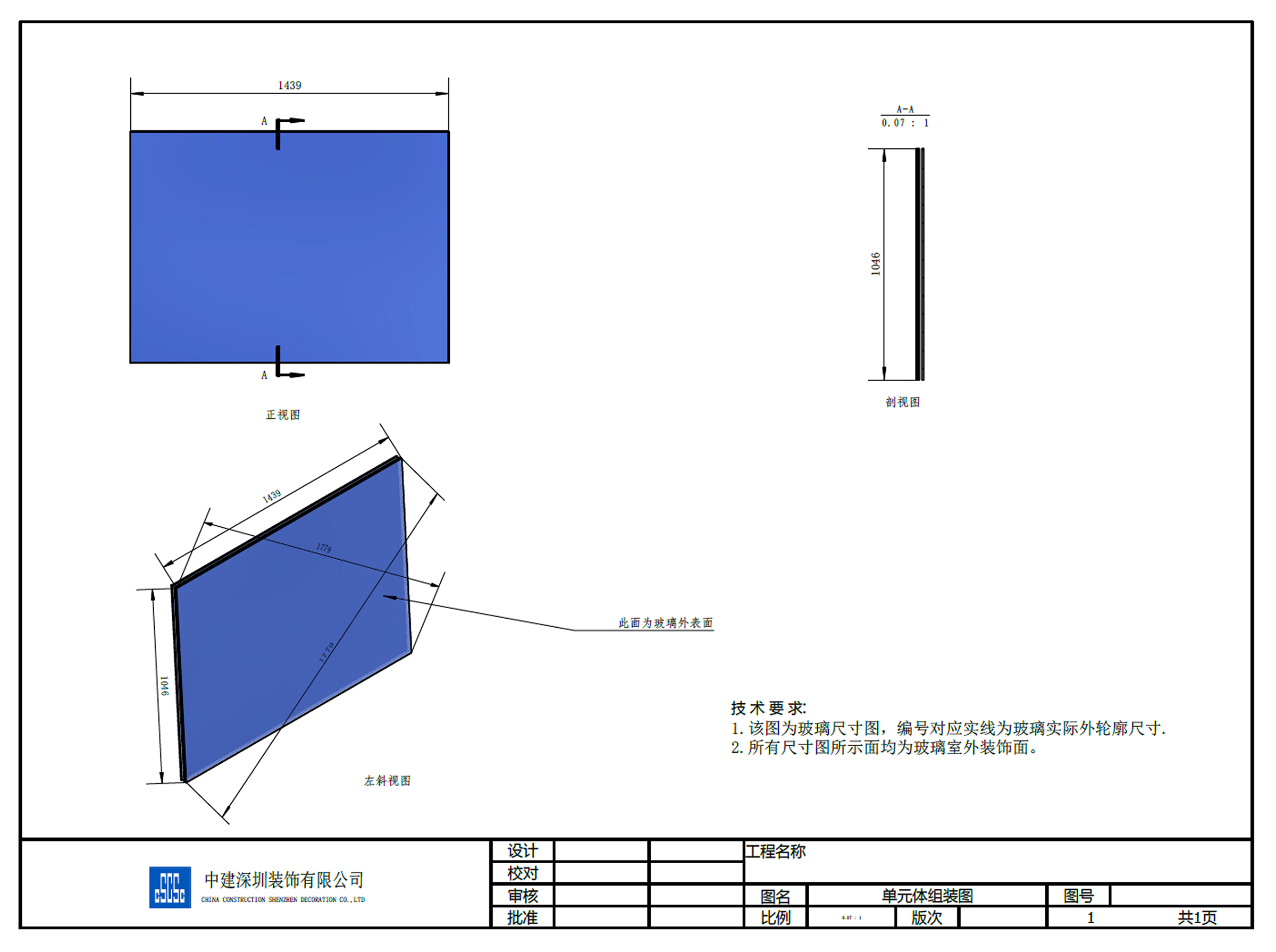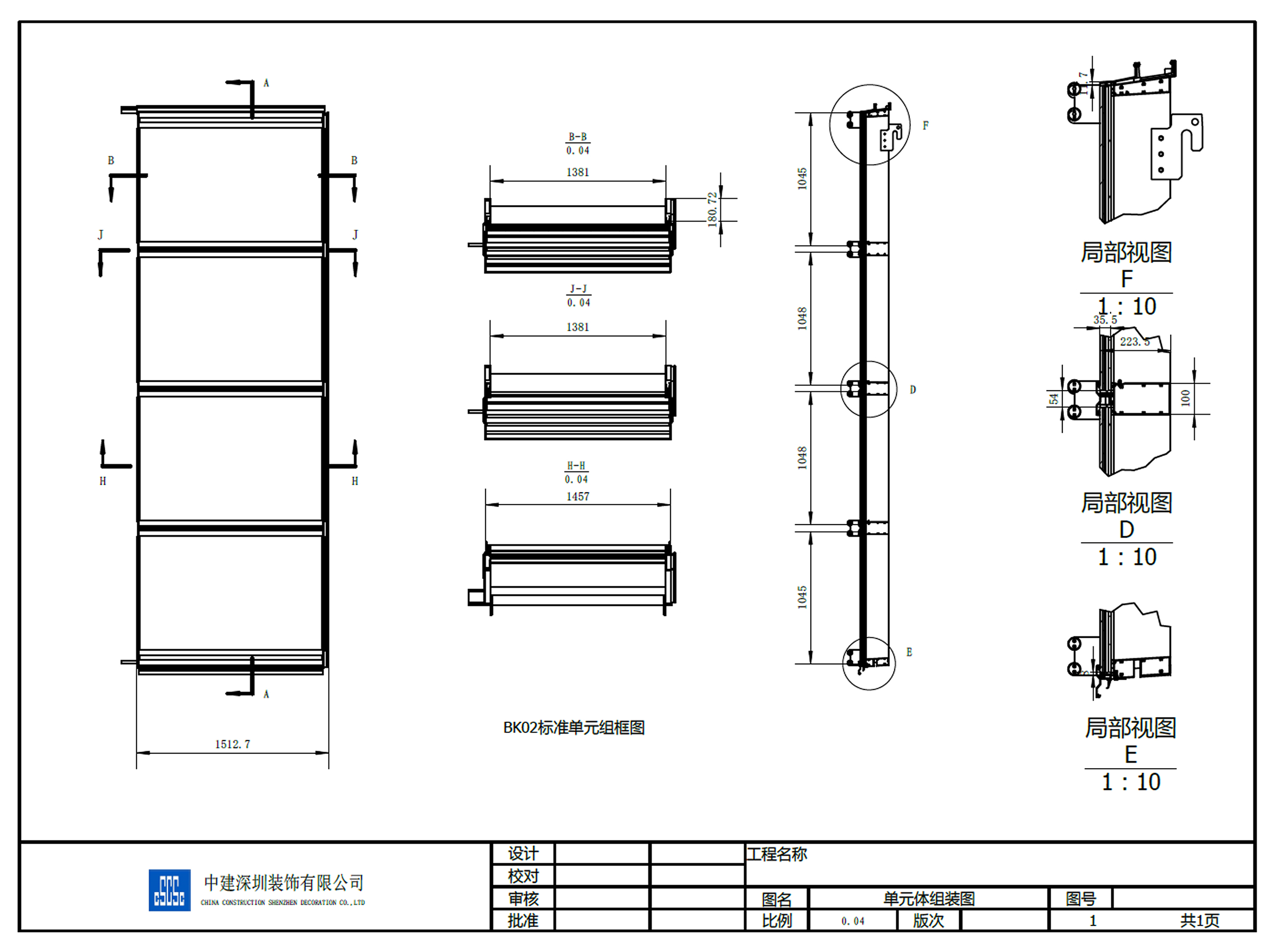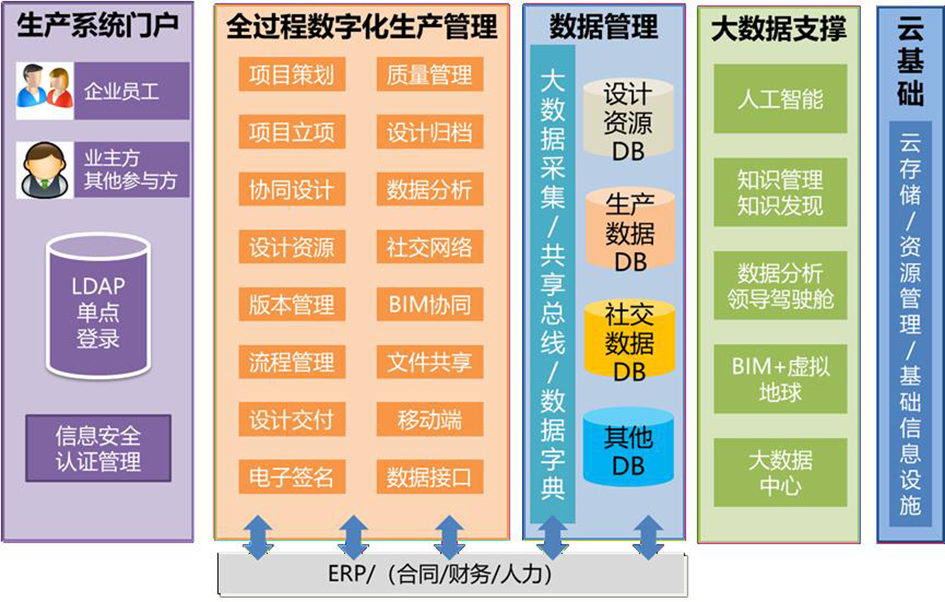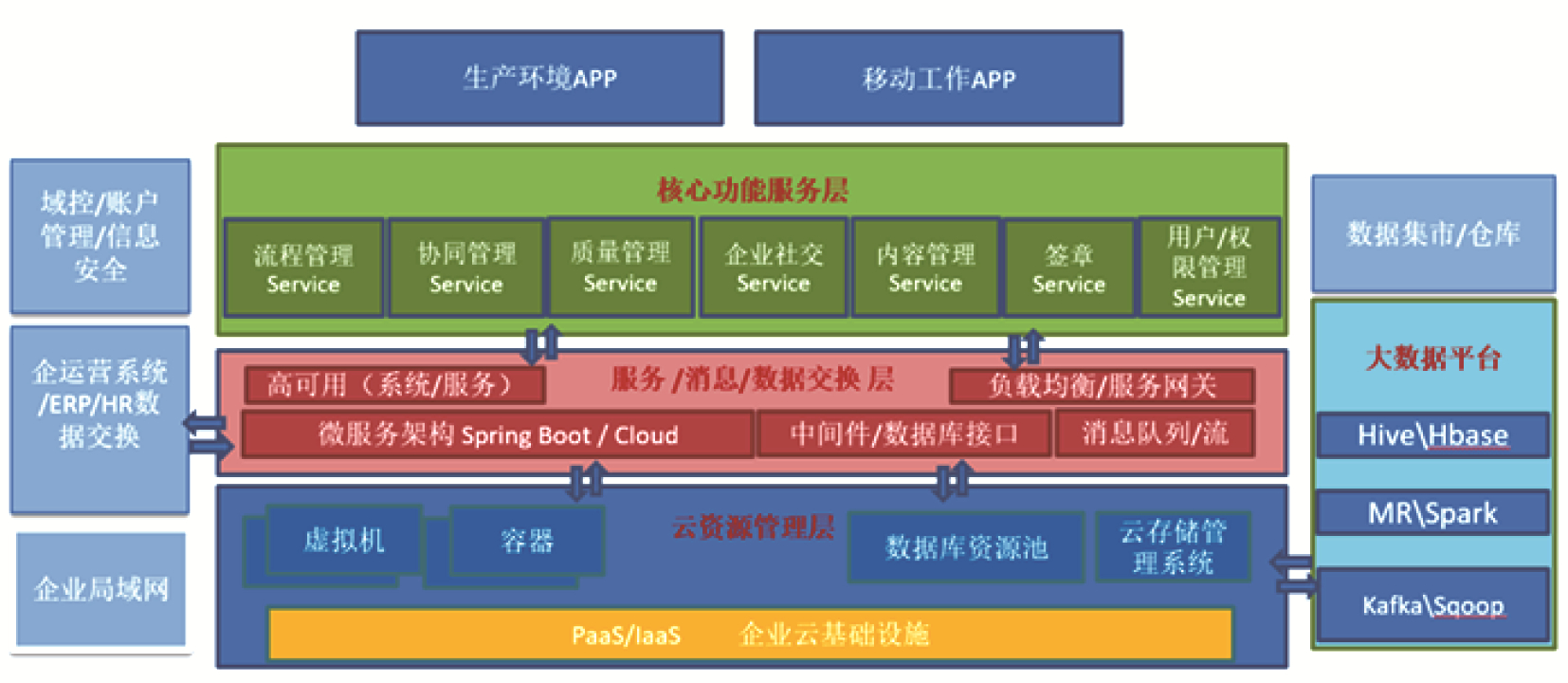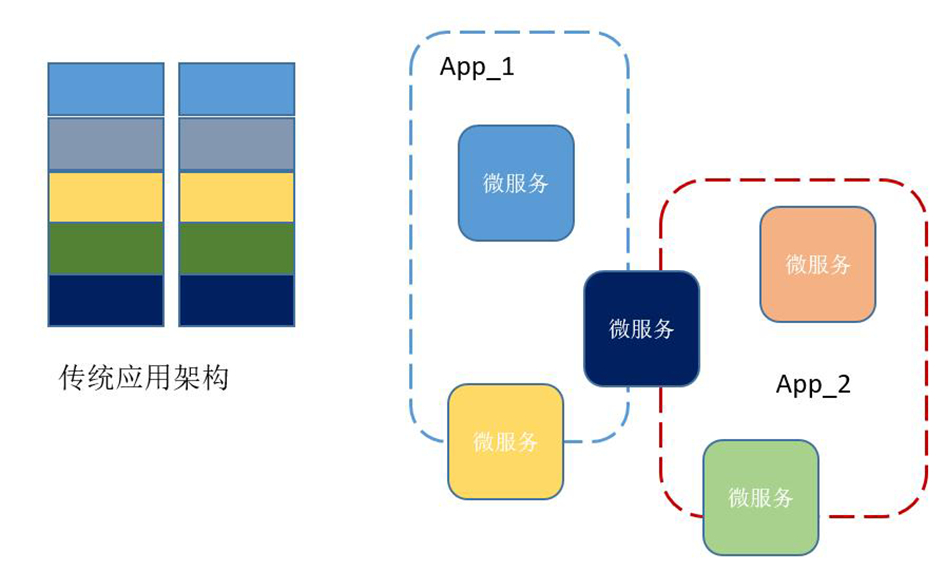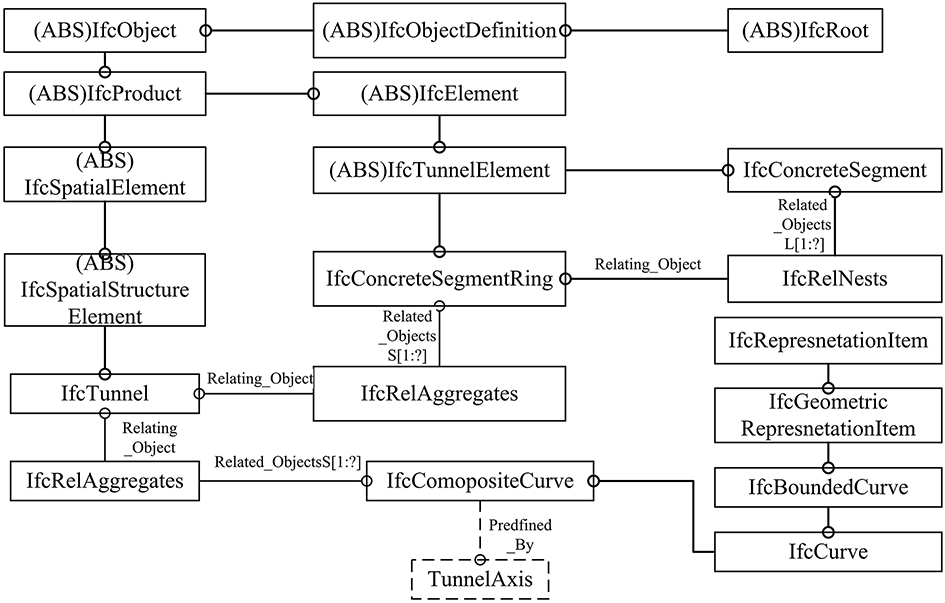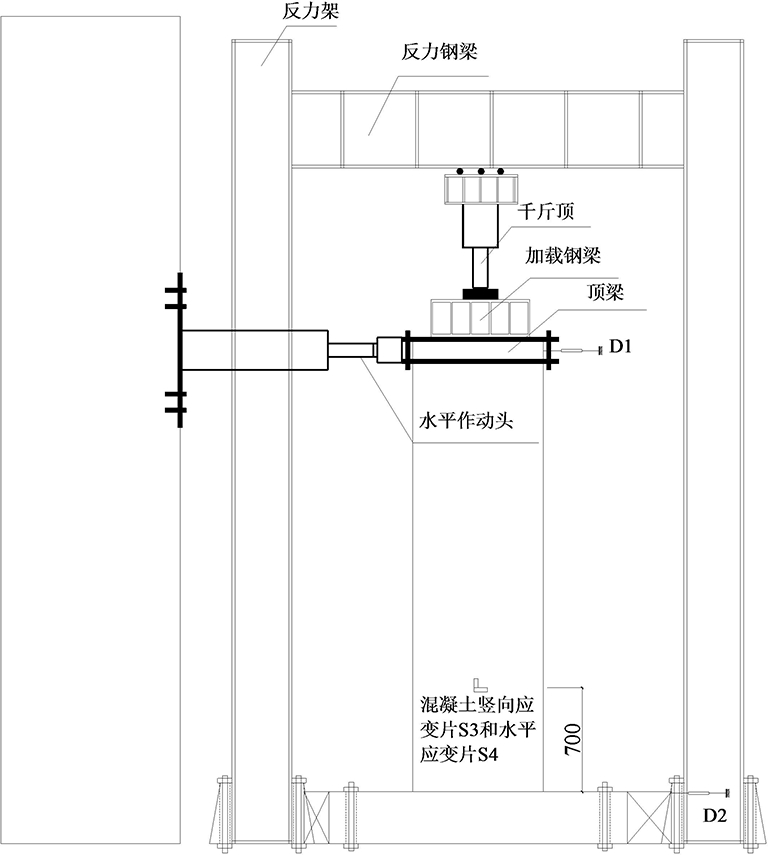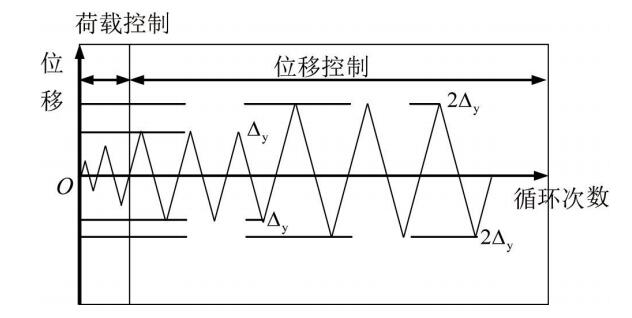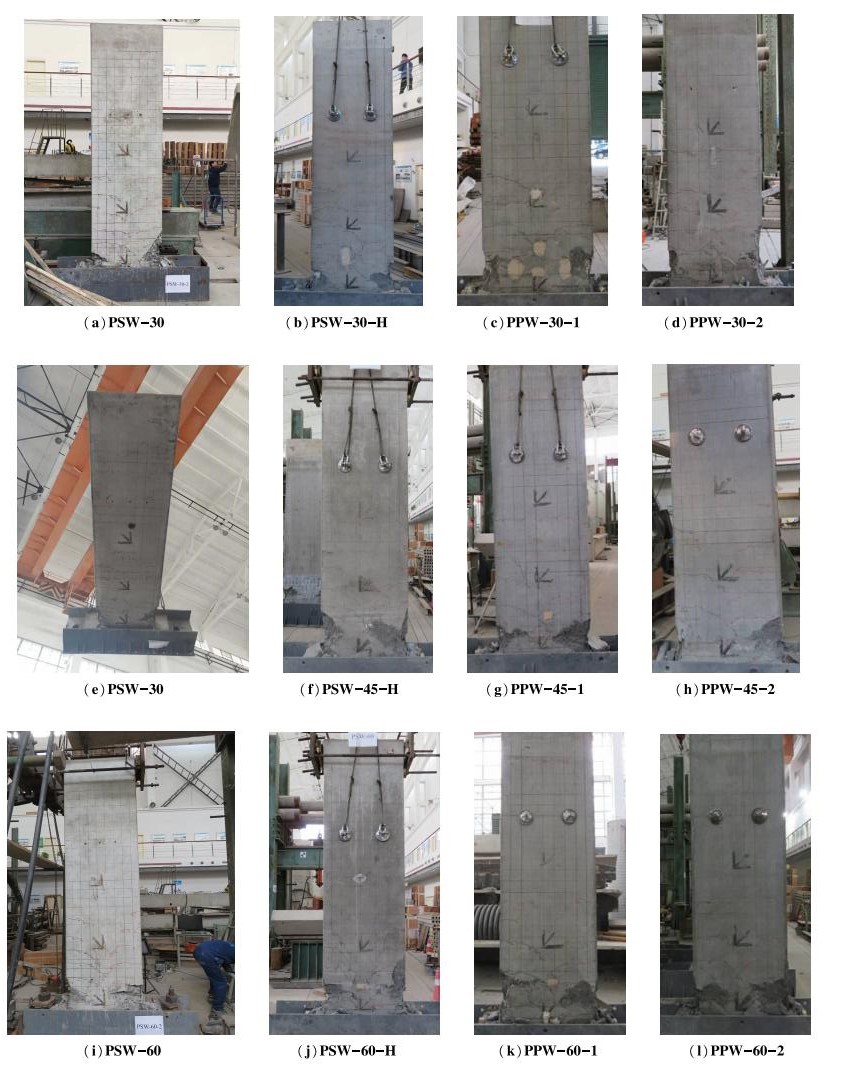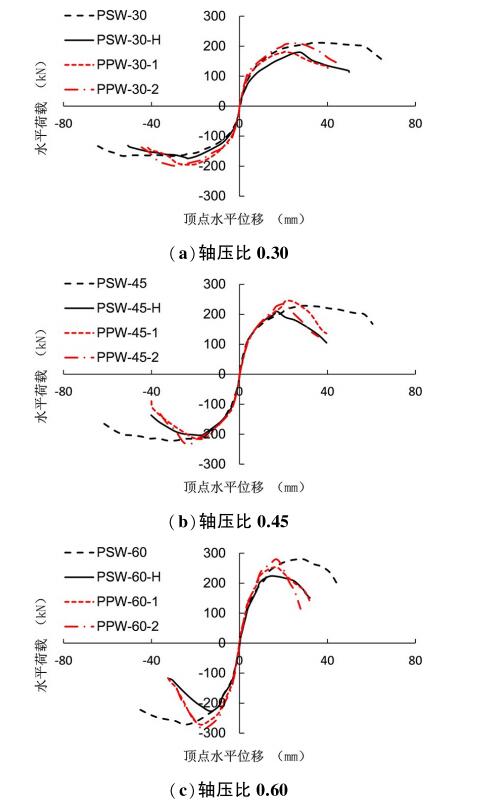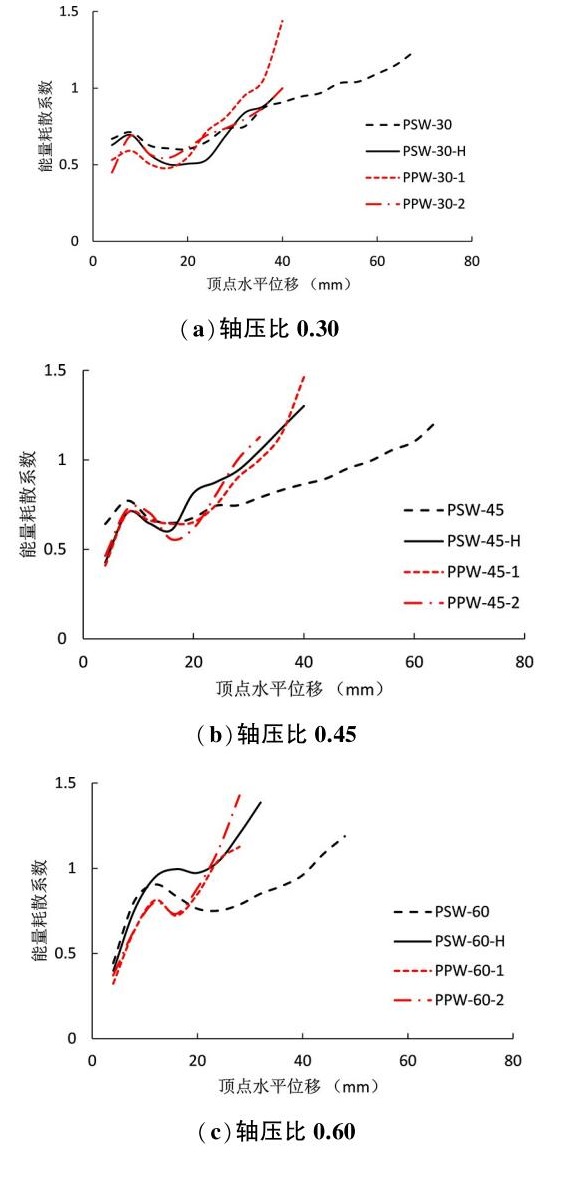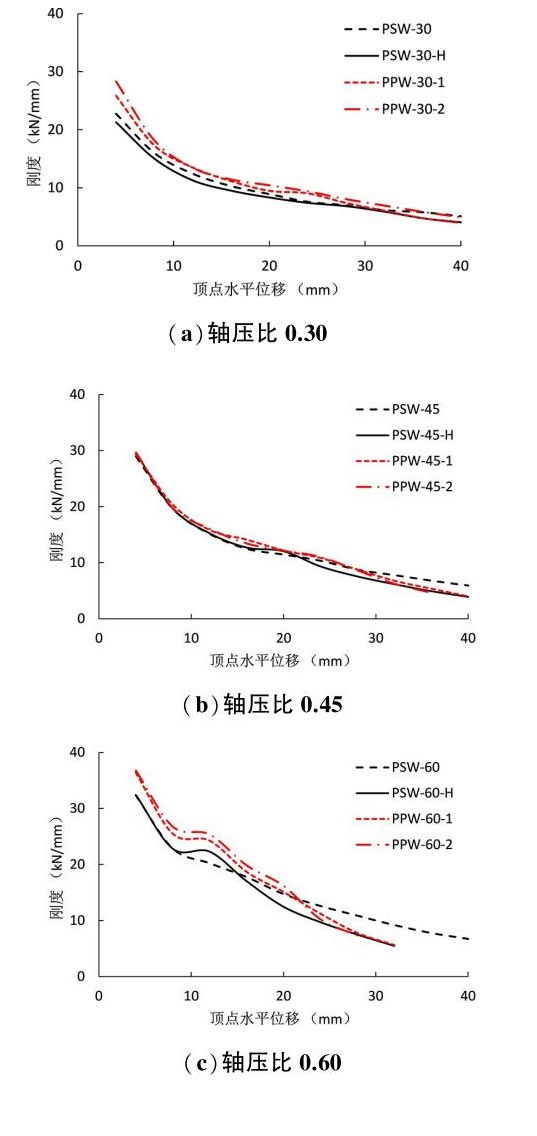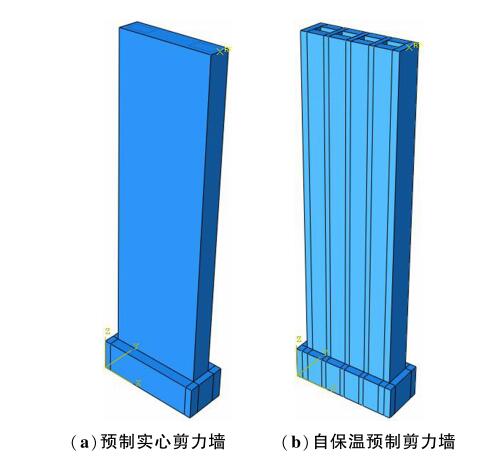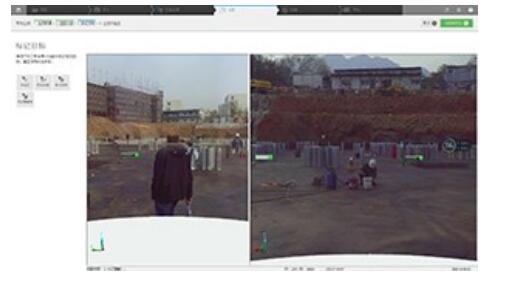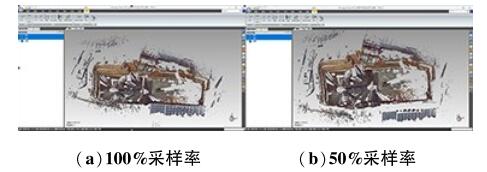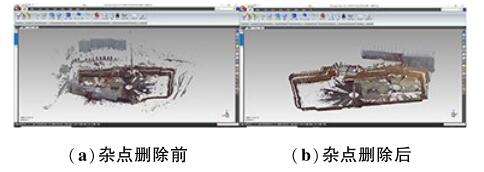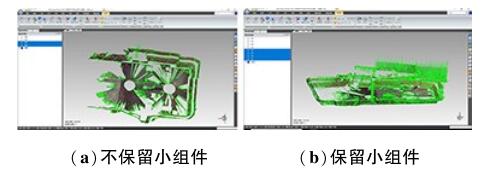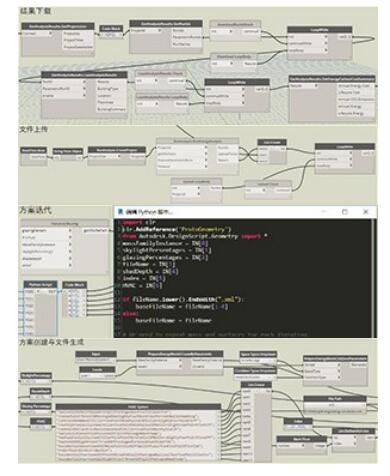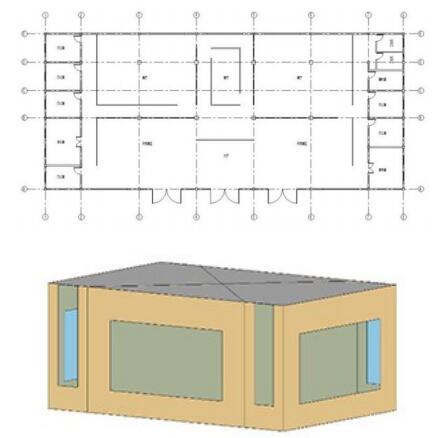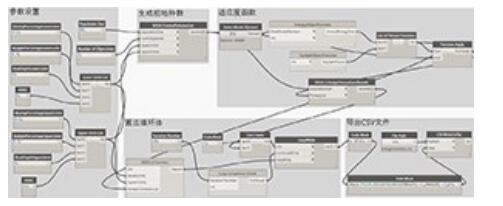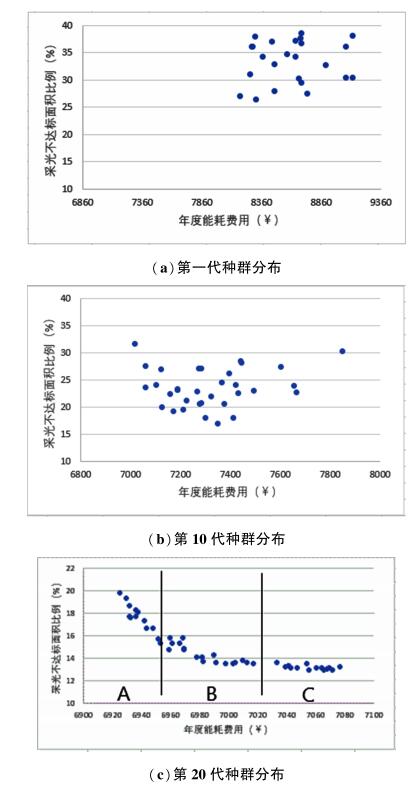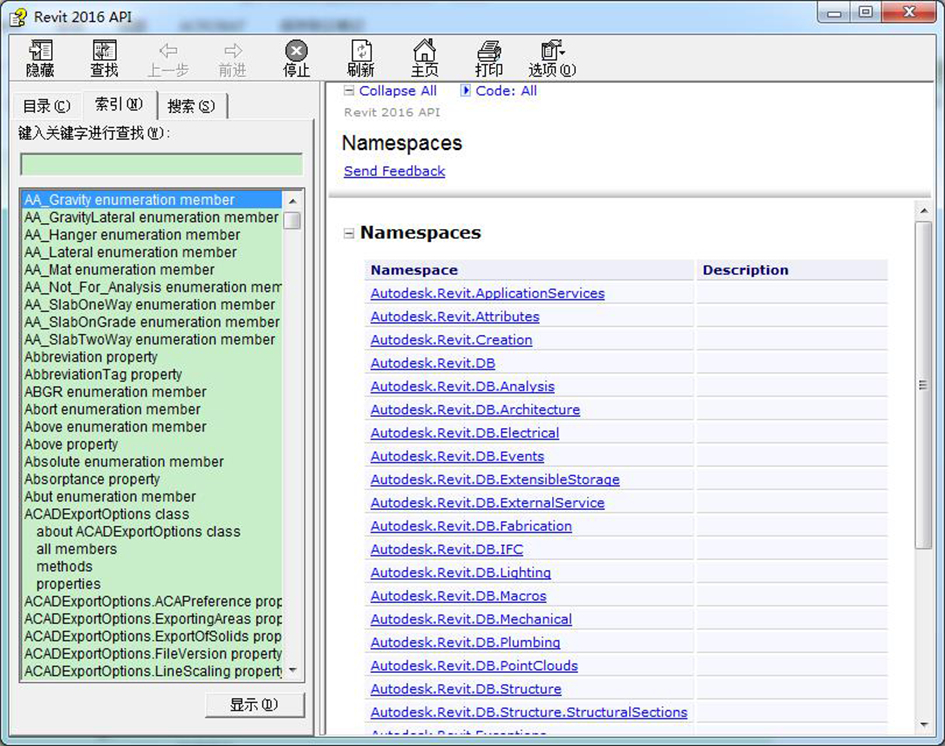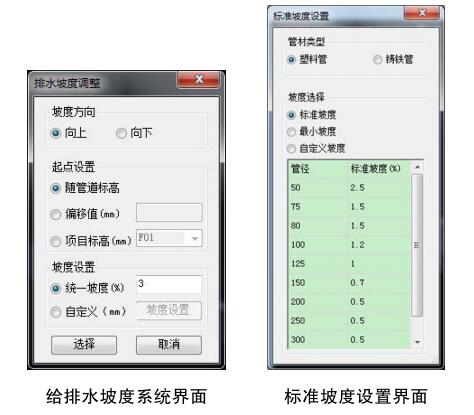Vol. 11, No 3, 2019
Display mode : |
2019, 11(3): 封二-封二.
Abstract:
2019, 11(3): 1-10.
doi: 10.16670/j.cnki.cn11-5823/tu.2019.03.01
Abstract:
In recent years, the BIM technology is under promotion in domestic construction industry of China, with many construction enterprises and architectural design enterprises formulated their own enterprise-level BIM technology development plans. All these plans will inevitably involve BIM demonstration projects. The authors of this paper has participated in the management of five batches of BIM demonstration projects in CSCEC in the past five years. In this paper, experiences are summed up concerning all the processes of BIM demonstration projects in construction enterprises including top-level planning, project declaration, process control, and acceptance and promotion. This paper also answers some questions like how should the management department of BIM demonstration projects guide BIM demonstration projects to apply BIM technology, as well as how to improve BIM application by promoting these demonstration projects. All these experiences can provide references for related enterprises that are carrying out BIM demonstration project management.
In recent years, the BIM technology is under promotion in domestic construction industry of China, with many construction enterprises and architectural design enterprises formulated their own enterprise-level BIM technology development plans. All these plans will inevitably involve BIM demonstration projects. The authors of this paper has participated in the management of five batches of BIM demonstration projects in CSCEC in the past five years. In this paper, experiences are summed up concerning all the processes of BIM demonstration projects in construction enterprises including top-level planning, project declaration, process control, and acceptance and promotion. This paper also answers some questions like how should the management department of BIM demonstration projects guide BIM demonstration projects to apply BIM technology, as well as how to improve BIM application by promoting these demonstration projects. All these experiences can provide references for related enterprises that are carrying out BIM demonstration project management.
2019, 11(3): 11-15.
doi: 10.16670/j.cnki.cn11-5823/tu.2019.03.02
Abstract:
Using BIM in construction projects can achieve huge benefits. In recent years, the facilitation of BIM has been widely improved in various countries. At present, BIM is mainly used in the design and construction phase of China's railway projects, and this does not reflect the true value of BIM. This paper discusses the characteristics of operation-oriented applications in BIM-based railway projects, and also studies the operation-oriented applications include an organization mode that lead by operation department and BIM consultation team; an operation-oriented hybrid system that involves multi-platform and various linked systems; and a collaborative workspace named IROOM. By comparing the conventional BIM applications, the operation-oriented application proposed in this paper considers the needs of lifecycle management on railway projects. It uses an operation-oriented method to regulate the design and construction phases, this in turns promote the use of BIM in railway projects. This paper provides a useful reference on the information integration in BIM-based railway projects.
Using BIM in construction projects can achieve huge benefits. In recent years, the facilitation of BIM has been widely improved in various countries. At present, BIM is mainly used in the design and construction phase of China's railway projects, and this does not reflect the true value of BIM. This paper discusses the characteristics of operation-oriented applications in BIM-based railway projects, and also studies the operation-oriented applications include an organization mode that lead by operation department and BIM consultation team; an operation-oriented hybrid system that involves multi-platform and various linked systems; and a collaborative workspace named IROOM. By comparing the conventional BIM applications, the operation-oriented application proposed in this paper considers the needs of lifecycle management on railway projects. It uses an operation-oriented method to regulate the design and construction phases, this in turns promote the use of BIM in railway projects. This paper provides a useful reference on the information integration in BIM-based railway projects.
2019, 11(3): 16-23.
doi: 10.16670/j.cnki.cn11-5823/tu.2019.03.03
Abstract:
The Tongzhou Cultural Tourist District Project is a construction project invested and constructed by the Tongzhou District Government, which possesses many characteristics of large construction volume, long construction cycle, complex project information and the difficulty of regional coordination. According to the actual needs of the project, a regional collaborative management platform is established based on the BIM+GIS technology to realize the collaborative management of the whole project, the whole staff and the whole profession. The platform adopts a four-tier architecture of user tier, application tier, data tier and service tier, including nine basic modules and three functional application modules. Key technologies adopted in the platform include model fusion, model lightweight, VR display and 3D rendering. Through the application of the platform in Tongzhou Cultural Tourist District project, the feasibility and value of such platform in improving the level of regional construction collaborative management are verified.
The Tongzhou Cultural Tourist District Project is a construction project invested and constructed by the Tongzhou District Government, which possesses many characteristics of large construction volume, long construction cycle, complex project information and the difficulty of regional coordination. According to the actual needs of the project, a regional collaborative management platform is established based on the BIM+GIS technology to realize the collaborative management of the whole project, the whole staff and the whole profession. The platform adopts a four-tier architecture of user tier, application tier, data tier and service tier, including nine basic modules and three functional application modules. Key technologies adopted in the platform include model fusion, model lightweight, VR display and 3D rendering. Through the application of the platform in Tongzhou Cultural Tourist District project, the feasibility and value of such platform in improving the level of regional construction collaborative management are verified.
2019, 11(3): 24-28.
doi: 10.16670/j.cnki.cn11-5823/tu.2019.03.04
Abstract:
The terrain of the project is complex and the transportation of personnel, materials and machinery is inconvenient. There are many professional subcontracts, coordination is difficult, and on-site management is difficult. The interior design is complex and the space 3D is irregular. For the characteristics of this project, multi-professional design based on complex surfaces. The application of model data extraction and construction will inevitably require the intervention and support of BIM technology.
The terrain of the project is complex and the transportation of personnel, materials and machinery is inconvenient. There are many professional subcontracts, coordination is difficult, and on-site management is difficult. The interior design is complex and the space 3D is irregular. For the characteristics of this project, multi-professional design based on complex surfaces. The application of model data extraction and construction will inevitably require the intervention and support of BIM technology.
2019, 11(3): 29-32.
doi: 10.16670/j.cnki.cn11-5823/tu.2019.03.05
Abstract:
In order to solve the organizational management difficulties of in large-scaled project constructions, this paper develops a BIM-based construction organization assistant decision system by combining the BIM technology and intelligent operation algorithms in areas of engineering construction organization. The design framework of the system and its module functions are also introduced in details in this paper. Applications of the system in practical engineering have shown that the proposed system can be used for scientific planning design and comprehensive systematic verification of the project construction organization scheme.
In order to solve the organizational management difficulties of in large-scaled project constructions, this paper develops a BIM-based construction organization assistant decision system by combining the BIM technology and intelligent operation algorithms in areas of engineering construction organization. The design framework of the system and its module functions are also introduced in details in this paper. Applications of the system in practical engineering have shown that the proposed system can be used for scientific planning design and comprehensive systematic verification of the project construction organization scheme.
2019, 11(3): 33-37.
doi: 10.16670/j.cnki.cn11-5823/tu.2019.03.06
Abstract:
This paper illustrates the reinforcement and transformation process of a concrete frame structured machine house based on BIM technology. A BIM model is established by using Revit based on the current situation of existing buildings to realize the 3D visualization and collaborative work. The optimization of building renovation plans was achieved from the aspects of pipeline optimization, collision detection (such as collision of column with pipeline and window, collision of beam with pipeline, etc.) and so on. The sunshine analysis function in Revit is helpful to rationally arrange the room, partition material, and etc. The application of BIM technology in the reinforcement of the existing building will avoid changes encountered in the traditional reinforcement and reconstruction.
This paper illustrates the reinforcement and transformation process of a concrete frame structured machine house based on BIM technology. A BIM model is established by using Revit based on the current situation of existing buildings to realize the 3D visualization and collaborative work. The optimization of building renovation plans was achieved from the aspects of pipeline optimization, collision detection (such as collision of column with pipeline and window, collision of beam with pipeline, etc.) and so on. The sunshine analysis function in Revit is helpful to rationally arrange the room, partition material, and etc. The application of BIM technology in the reinforcement of the existing building will avoid changes encountered in the traditional reinforcement and reconstruction.
2019, 11(3): 38-43.
doi: 10.16670/j.cnki.cn11-5823/tu.2019.03.07
Abstract:
Quantitative statistics is one of the most valuable application of BIM technology of great significance. Considering that the reinforcement engineering itself is incomplex and changeable structure, involving many relative atlases and codes, as well as all different kinds and parameters, the Revit software is functional limited in the graphical display of reinforcement engineering, leading to the lack of development and solution of BIM reinforcement calculation. In response to the above problems, based on the secondary development on Revit, this paper realizes 3D reinforcement quantitative statistics to provide scientific and accurate data support for the statistics of reinforcement materials, which has broken through the technical bottleneck, and deeply excavated the application value of BIM in reinforcement engineering.
Quantitative statistics is one of the most valuable application of BIM technology of great significance. Considering that the reinforcement engineering itself is incomplex and changeable structure, involving many relative atlases and codes, as well as all different kinds and parameters, the Revit software is functional limited in the graphical display of reinforcement engineering, leading to the lack of development and solution of BIM reinforcement calculation. In response to the above problems, based on the secondary development on Revit, this paper realizes 3D reinforcement quantitative statistics to provide scientific and accurate data support for the statistics of reinforcement materials, which has broken through the technical bottleneck, and deeply excavated the application value of BIM in reinforcement engineering.
2019, 11(3): 44-49.
doi: 10.16670/j.cnki.cn11-5823/tu.2019.03.08
Abstract:
There have been many policy documents in state-, province- and city-levels about the development of prefabricated buildings in recent years, which are aiming at promoting the application of prefabricated buildings. Currently, the prefabricated buildings can be built by two forms of fully prefabrication and partial prefabrication, in which the latter one is of more applications in the industry. This paper introduces the construction progress of a certain partial prefabricated building project, and sorts out the problems related to the construction of partial prefabricated building. Relevant opinions and suggests are promoted that, in the design stage, the overall planning of PC component application deserves more attention to be paid, and that effective transformation of design drawings should be noticed in the implementation stage to connect the design, production and construction processes. Only by strictly controlling the quality of PC components, can the superiority of assembly building technology be brought into full play.
There have been many policy documents in state-, province- and city-levels about the development of prefabricated buildings in recent years, which are aiming at promoting the application of prefabricated buildings. Currently, the prefabricated buildings can be built by two forms of fully prefabrication and partial prefabrication, in which the latter one is of more applications in the industry. This paper introduces the construction progress of a certain partial prefabricated building project, and sorts out the problems related to the construction of partial prefabricated building. Relevant opinions and suggests are promoted that, in the design stage, the overall planning of PC component application deserves more attention to be paid, and that effective transformation of design drawings should be noticed in the implementation stage to connect the design, production and construction processes. Only by strictly controlling the quality of PC components, can the superiority of assembly building technology be brought into full play.
2019, 11(3): 50-54.
doi: 10.16670/j.cnki.cn11-5823/tu.2019.03.09
Abstract:
As a newly emerged technology, the BIM technology still possesses many uncertain factors or uncertain trends in the future. Under the background of BIM application in the whole industry, it is generally believed in the whole industry that BIM technology can bring higher economic value, which, however, lacks of strong support of evaluation system. Based on the characteristics of BIM technology, this paper determines the performance evaluation index through integrated methods of questionnaire survey and literature induction, and also establishes a performance evaluation system of engineering projects of BIM technology by using the analytic hierarchy process and fuzzy comprehensive evaluation. The established BIM project performance evaluation system is then applied in a BIM pilot project which has completed acceptance to conclude comprehensive evaluations of the performance of the project.
As a newly emerged technology, the BIM technology still possesses many uncertain factors or uncertain trends in the future. Under the background of BIM application in the whole industry, it is generally believed in the whole industry that BIM technology can bring higher economic value, which, however, lacks of strong support of evaluation system. Based on the characteristics of BIM technology, this paper determines the performance evaluation index through integrated methods of questionnaire survey and literature induction, and also establishes a performance evaluation system of engineering projects of BIM technology by using the analytic hierarchy process and fuzzy comprehensive evaluation. The established BIM project performance evaluation system is then applied in a BIM pilot project which has completed acceptance to conclude comprehensive evaluations of the performance of the project.
2019, 11(3): 65-69.
doi: 10.16670/j.cnki.cn11-5823/tu.2019.03.11
Abstract:
The application of BIM technology makes the whole process of design, construction and operation of traditional buildings transparent.With the application of BIM technology in construction industry becoming more popular, BIM-related technologies are increasingly favored by the industry. Meanwhile, the exploration of the ultimate form of architecture, intelligent architecture, is already the mainstream direction of future architectural development. This paper mainly focuses on the construction of intelligent buildings in the context of BIM technology.
The application of BIM technology makes the whole process of design, construction and operation of traditional buildings transparent.With the application of BIM technology in construction industry becoming more popular, BIM-related technologies are increasingly favored by the industry. Meanwhile, the exploration of the ultimate form of architecture, intelligent architecture, is already the mainstream direction of future architectural development. This paper mainly focuses on the construction of intelligent buildings in the context of BIM technology.
2019, 11(3): 70-75.
doi: 10.16670/j.cnki.cn11-5823/tu.2019.03.12
Abstract:
This paper focuses on the issue of BIM team development for contractors. Through literature review and interview, the critical influencing factors for BIM team development is firstly identified, then the questionnaire survey is conducted to analyze the expectation of BIM application in project, the difficulty level of developing a BIM team, the method of BIM team development, and the training of BIM talents. The paper is aiming at understanding the ways and present situation of BIM talents training in the construction of contractor's BIM team, and through case studies, the paper analyzes the organizational structure of contractor BIM team.
This paper focuses on the issue of BIM team development for contractors. Through literature review and interview, the critical influencing factors for BIM team development is firstly identified, then the questionnaire survey is conducted to analyze the expectation of BIM application in project, the difficulty level of developing a BIM team, the method of BIM team development, and the training of BIM talents. The paper is aiming at understanding the ways and present situation of BIM talents training in the construction of contractor's BIM team, and through case studies, the paper analyzes the organizational structure of contractor BIM team.
2019, 11(3): 76-80.
doi: 10.16670/j.cnki.cn11-5823/tu.2019.03.13
Abstract:
With the continuous development and popularization of BIM technology, increasing numbers of engineering projects are willing to use BIM technology. Traditional design and construction management mode using CAD, which focuses on the engineering drawings, is no longer able to meet the requirements of highly complex construction engineering. For an enterprise in the industry, BIM applications should not only limited with the establishment and application of a 3D model. There is an urgent need for a BIM system platform to manage and control all engineering projects, to achieve scientific decision-making, to accumulate construction experiences, and to support later operation and maintenance management.
With the continuous development and popularization of BIM technology, increasing numbers of engineering projects are willing to use BIM technology. Traditional design and construction management mode using CAD, which focuses on the engineering drawings, is no longer able to meet the requirements of highly complex construction engineering. For an enterprise in the industry, BIM applications should not only limited with the establishment and application of a 3D model. There is an urgent need for a BIM system platform to manage and control all engineering projects, to achieve scientific decision-making, to accumulate construction experiences, and to support later operation and maintenance management.
2019, 11(3): 81-88.
doi: 10.16670/j.cnki.cn11-5823/tu.2019.03.14
Abstract:
Taking the complexed curtain wall of a certain super high-rise building as an example, this paper discusses the application of innovative technology, which integrates the BIM technology with industrial digitization, in the drawing and blanking of the curtain wall structure of high-rise building. Comparisons are made with the traditional curtain wall drawing and blanking process, through which embodies the outstanding advantages of the innovative technology integrating BIM and industrial digitization in the works of drawing and blanking of the curtain wall structure.
Taking the complexed curtain wall of a certain super high-rise building as an example, this paper discusses the application of innovative technology, which integrates the BIM technology with industrial digitization, in the drawing and blanking of the curtain wall structure of high-rise building. Comparisons are made with the traditional curtain wall drawing and blanking process, through which embodies the outstanding advantages of the innovative technology integrating BIM and industrial digitization in the works of drawing and blanking of the curtain wall structure.
2019, 11(3): 89-95.
doi: 10.16670/j.cnki.cn11-5823/tu.2019.03.15
Abstract:
As the core of informatization construction of large-scale architectural design enterprises, the production business platform plays an important role in collaborative design, quality check, and data management. Facing the construction needs of the production platform of large-scale architectural design enterprises, this paper creates an integrated platform based on cloud architecture for the whole life cycle business application and management to be used by architects and managers, which takes the production business data management as the core, and interconnected production and working environment to realize horizontal integration and vertical connectivity of business chain in engineering construction industry. Users are able to efficiently carry out production management in a unified data environment. In view of the construction needs and goals, this paper puts forward the overall structure of the production business platform for large-scale architectural design enterprises, which is divided into four levels of platform portal, digital production management, data management and big data support. At the same time, the overall technical route of the platform based on micro-service architecture is proposed, which includes five characteristics and four key technologies to achieve high-level performance and availability. The main idea and method of building production business platform proposed in this paper are intending to provide reference for the construction of production platforms for large-scale architectural design enterprises in the industry, to promote the integration of information technology between the Internet information technology and the construction industry, and to improve the informationization level of architectural design enterprises in the industry.
As the core of informatization construction of large-scale architectural design enterprises, the production business platform plays an important role in collaborative design, quality check, and data management. Facing the construction needs of the production platform of large-scale architectural design enterprises, this paper creates an integrated platform based on cloud architecture for the whole life cycle business application and management to be used by architects and managers, which takes the production business data management as the core, and interconnected production and working environment to realize horizontal integration and vertical connectivity of business chain in engineering construction industry. Users are able to efficiently carry out production management in a unified data environment. In view of the construction needs and goals, this paper puts forward the overall structure of the production business platform for large-scale architectural design enterprises, which is divided into four levels of platform portal, digital production management, data management and big data support. At the same time, the overall technical route of the platform based on micro-service architecture is proposed, which includes five characteristics and four key technologies to achieve high-level performance and availability. The main idea and method of building production business platform proposed in this paper are intending to provide reference for the construction of production platforms for large-scale architectural design enterprises in the industry, to promote the integration of information technology between the Internet information technology and the construction industry, and to improve the informationization level of architectural design enterprises in the industry.
2019, 11(3): 96-103.
doi: 10.16670/j.cnki.cn11-5823/tu.2019.03.16
Abstract:
With the increase of traffic pressure in China, the subway has become the main mode of travel to relieve traffic pressure. At present, the construction of the subway has entered a peak period, but the quality problems of the tunnel has also come one after another. The shield method has already dominated the tunnel construction methods. In the shield tunneling, the quality of the entire life cycle of the segment directly determines the quality of the entire tunnel project. At present, the segment detection technology adopts the method of manual work, there are problems such as slow information processing and information sharing troubles. How to use information technology to realize integrated management of detection information has become a trend. Firstly, this article analyzes the inspection information at each stage of the segment. Then, based on the IFC standard model system, expansion methods and graphic representation methods, the segment detection information was expressed and extended, and a segment detection information model based on the IFC standard was established.
With the increase of traffic pressure in China, the subway has become the main mode of travel to relieve traffic pressure. At present, the construction of the subway has entered a peak period, but the quality problems of the tunnel has also come one after another. The shield method has already dominated the tunnel construction methods. In the shield tunneling, the quality of the entire life cycle of the segment directly determines the quality of the entire tunnel project. At present, the segment detection technology adopts the method of manual work, there are problems such as slow information processing and information sharing troubles. How to use information technology to realize integrated management of detection information has become a trend. Firstly, this article analyzes the inspection information at each stage of the segment. Then, based on the IFC standard model system, expansion methods and graphic representation methods, the segment detection information was expressed and extended, and a segment detection information model based on the IFC standard was established.
2019, 11(3): 104-116.
doi: 10.16670/j.cnki.cn11-5823/tu.2019.03.17
Abstract:
To investigate the seismic behavior of innovative precast self-insulation reinforced concrete shear walls under different axial compression ratios, the authors conducted reversed cyclic loading test through designing and manufacturing 4 groups of 12 RC shear wall specimens, which are all ingle-shaped shear walls with the same reinforcement, and with hidden columns at both ends. All specimens include one group of solid cast-in-situ shear wall specimens for contrast, one group of post-filled hollow precast shear wall specimens, and two group of innovative precast self-insulation precast RC shear wall specimens. A refined finite element analysis model of self-insulating concrete shear wall is established by using ABAQUS finite element software. Results indicate that the self-insulation precast shear walls perform equally well in averaged yielding load and peak load in comparison with the precast solid shear walls under the three design axial compression ratios. While the ductility ratios and accumulated dissipated energy of precast self-insulation shear walls are lower than those of precast solid shear walls, the stiffness degradation curves of the two kinds of shear walls are smilar with each other. When the horizontal displacement at the top of shear walls is within ±20 mm, the energy dissipation ratios of the two kinds of shear walls are similar under the three designed axial compression ratios, but when the horizontal displacement is over ±20 mm, the energy dissipation ratio of the precast self-insulation shear walls will be somehow higher than that of solid shear walls. The error between the numerical simulation results and the test results of the peak load test of the self-insulation precast shear wall specimens are within 5%, which satisfies the engineering accuracy.
To investigate the seismic behavior of innovative precast self-insulation reinforced concrete shear walls under different axial compression ratios, the authors conducted reversed cyclic loading test through designing and manufacturing 4 groups of 12 RC shear wall specimens, which are all ingle-shaped shear walls with the same reinforcement, and with hidden columns at both ends. All specimens include one group of solid cast-in-situ shear wall specimens for contrast, one group of post-filled hollow precast shear wall specimens, and two group of innovative precast self-insulation precast RC shear wall specimens. A refined finite element analysis model of self-insulating concrete shear wall is established by using ABAQUS finite element software. Results indicate that the self-insulation precast shear walls perform equally well in averaged yielding load and peak load in comparison with the precast solid shear walls under the three design axial compression ratios. While the ductility ratios and accumulated dissipated energy of precast self-insulation shear walls are lower than those of precast solid shear walls, the stiffness degradation curves of the two kinds of shear walls are smilar with each other. When the horizontal displacement at the top of shear walls is within ±20 mm, the energy dissipation ratios of the two kinds of shear walls are similar under the three designed axial compression ratios, but when the horizontal displacement is over ±20 mm, the energy dissipation ratio of the precast self-insulation shear walls will be somehow higher than that of solid shear walls. The error between the numerical simulation results and the test results of the peak load test of the self-insulation precast shear wall specimens are within 5%, which satisfies the engineering accuracy.
2019, 11(3): 117-120.
doi: 10.16670/j.cnki.cn11-5823/tu.2019.03.18
Abstract:
As an indispensable work in the construction process, the foundation pit deformation monitoring plays a very important role in improving the quality and safety of the whole building. Therefore, after the completion of foundation pit construction, a combined foundation pit deformation monitoring method of the traditional one and the 3D laser scanning technology is conducted for monitoring the foundation pit deformation, making the monitoring more intuitive, which promotes the overall quality of the foundation pit. This paper mainly introduces the basic principles of 3D laser scanner, as well as its advantages over traditional surveying and mapping methods. Taking the foundation pit of the new student service center in dalian university project as an example, this paper also describes the method and process of using 3D laser scanning technology to model the foundation pit surveying and mapping, and also summarizes and prospects the application of 3D laser scanning technology in the foundation pit construction.
As an indispensable work in the construction process, the foundation pit deformation monitoring plays a very important role in improving the quality and safety of the whole building. Therefore, after the completion of foundation pit construction, a combined foundation pit deformation monitoring method of the traditional one and the 3D laser scanning technology is conducted for monitoring the foundation pit deformation, making the monitoring more intuitive, which promotes the overall quality of the foundation pit. This paper mainly introduces the basic principles of 3D laser scanner, as well as its advantages over traditional surveying and mapping methods. Taking the foundation pit of the new student service center in dalian university project as an example, this paper also describes the method and process of using 3D laser scanning technology to model the foundation pit surveying and mapping, and also summarizes and prospects the application of 3D laser scanning technology in the foundation pit construction.
2019, 11(3): 121-127.
doi: 10.16670/j.cnki.cn11-5823/tu.2019.03.19
Abstract:
The scheme design is the very initial stage of the architectural design, which acts as a key role in achieving the expected comprehensive objectives of the project. For the green buildings, the scheme design will focus more on the environmental performance, considering many design factors. So, the task is a typical multi-objective and multi-attribute decision-making job. Based on the parametric design theory, this paper analyzes and extracts the key design factors affecting environmental performance during the scheme design phase, and then establishes a design optimization model with energy consumption and natural daylight as the objective functions. Through integrating the NSGA-Ⅱ algorithm and GBS simulation by using Dynamo, the model can be solved, and the optimal design scheme will be selected. Lastly, a case study is conducted to verify the validity.
The scheme design is the very initial stage of the architectural design, which acts as a key role in achieving the expected comprehensive objectives of the project. For the green buildings, the scheme design will focus more on the environmental performance, considering many design factors. So, the task is a typical multi-objective and multi-attribute decision-making job. Based on the parametric design theory, this paper analyzes and extracts the key design factors affecting environmental performance during the scheme design phase, and then establishes a design optimization model with energy consumption and natural daylight as the objective functions. Through integrating the NSGA-Ⅱ algorithm and GBS simulation by using Dynamo, the model can be solved, and the optimal design scheme will be selected. Lastly, a case study is conducted to verify the validity.
2019, 11(3): 128-133.
doi: 10.16670/j.cnki.cn11-5823/tu.2019.03.20
Abstract:
With its unique advantages, construction informatization is increasingly recognized by the whole industry of engineering and construction. However, compared with the previous 2D design, Revit still has some problems such as inefficiency when its BIM model is applied in engineering design for adjusting pipeline gradient. Referring to the Outdoor Drainage Design Code (GB 50014-2006) Gradient, this paper studies the BIM-based gradient adjustment water supply pipeline through the application of secondary development on Revit.Through the secondary development technology, the corresponding relationship between pipe diameter and slope value is adjusted in batches, which makes the Revit software more efficient and convenient in collaborative work, and meanwhile greatly reduces the error rate. Finally, an engineering example is presented, which provides a reference for promoting the development of BIM software and other technologies.
With its unique advantages, construction informatization is increasingly recognized by the whole industry of engineering and construction. However, compared with the previous 2D design, Revit still has some problems such as inefficiency when its BIM model is applied in engineering design for adjusting pipeline gradient. Referring to the Outdoor Drainage Design Code (GB 50014-2006) Gradient, this paper studies the BIM-based gradient adjustment water supply pipeline through the application of secondary development on Revit.Through the secondary development technology, the corresponding relationship between pipe diameter and slope value is adjusted in batches, which makes the Revit software more efficient and convenient in collaborative work, and meanwhile greatly reduces the error rate. Finally, an engineering example is presented, which provides a reference for promoting the development of BIM software and other technologies.
2019, 11(3): 134-138.
doi: 10.16670/j.cnki.cn11-5823/tu.2019.03.21
Abstract:
The ISO 19650 series is a new international standard for the management of information when using building information modelling (BIM). The new standards aims to enable teams to minimise wasteful activities and increase predictability around cost and time. Designed to be achieved through a common and collaborative approach to the management of information. This is especially beneficial at a time when we are increasingly seeing delivery teams formed of organizations from different countries, with different cultures and differing ways of working, coming together on projects. Many organization currently align to BS 1192 series of standards. Therefore, it is vital or those organizations to get the help and support needed to transition from the UK 1192 series. To assist adopting, a new publication (PD 19650-0) contains transitional guidance for those familiar with the UK 1192 series. Including the mapping of terminology and key amendments.
Moving forward, three leading bodies - British Standards Institution (BSI), UK BIM Alliance and the Centre for Digitally Built Britain (CDBB) agreed to collaborate to create a single guidance framework for the adoption and implementation of the ISO 19650 series.
The ISO 19650 series is a new international standard for the management of information when using building information modelling (BIM). The new standards aims to enable teams to minimise wasteful activities and increase predictability around cost and time. Designed to be achieved through a common and collaborative approach to the management of information. This is especially beneficial at a time when we are increasingly seeing delivery teams formed of organizations from different countries, with different cultures and differing ways of working, coming together on projects. Many organization currently align to BS 1192 series of standards. Therefore, it is vital or those organizations to get the help and support needed to transition from the UK 1192 series. To assist adopting, a new publication (PD 19650-0) contains transitional guidance for those familiar with the UK 1192 series. Including the mapping of terminology and key amendments.
Moving forward, three leading bodies - British Standards Institution (BSI), UK BIM Alliance and the Centre for Digitally Built Britain (CDBB) agreed to collaborate to create a single guidance framework for the adoption and implementation of the ISO 19650 series.



